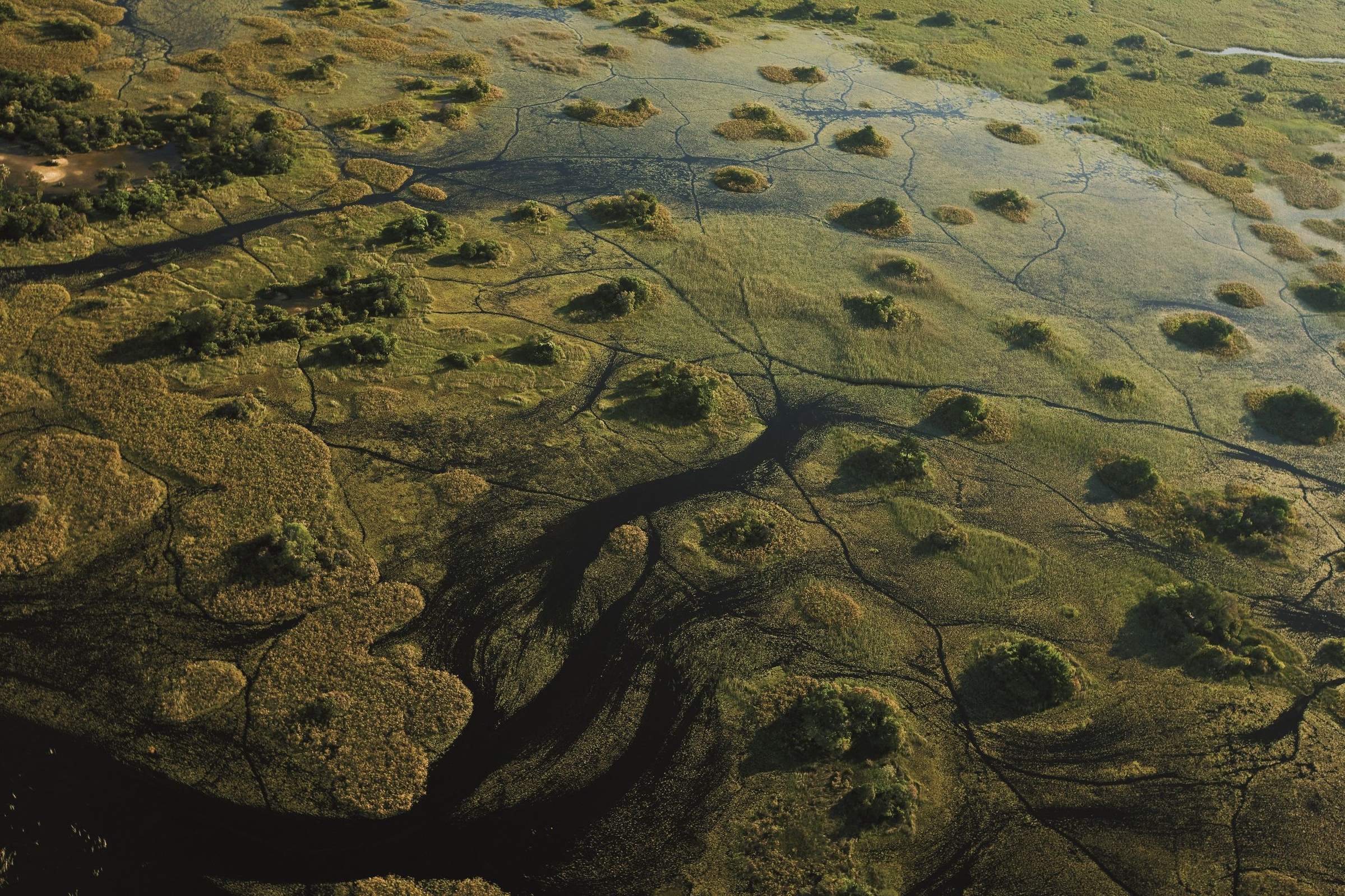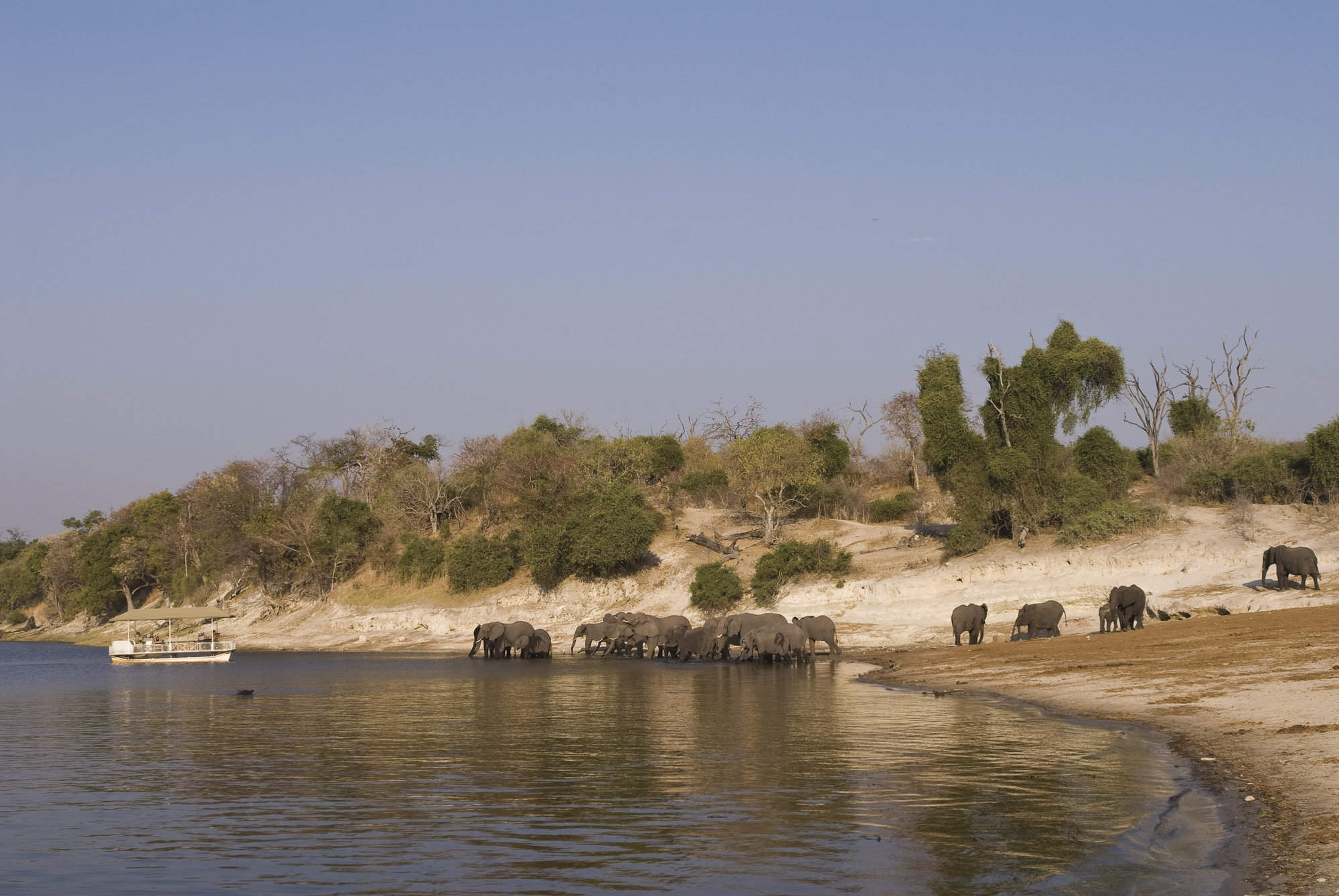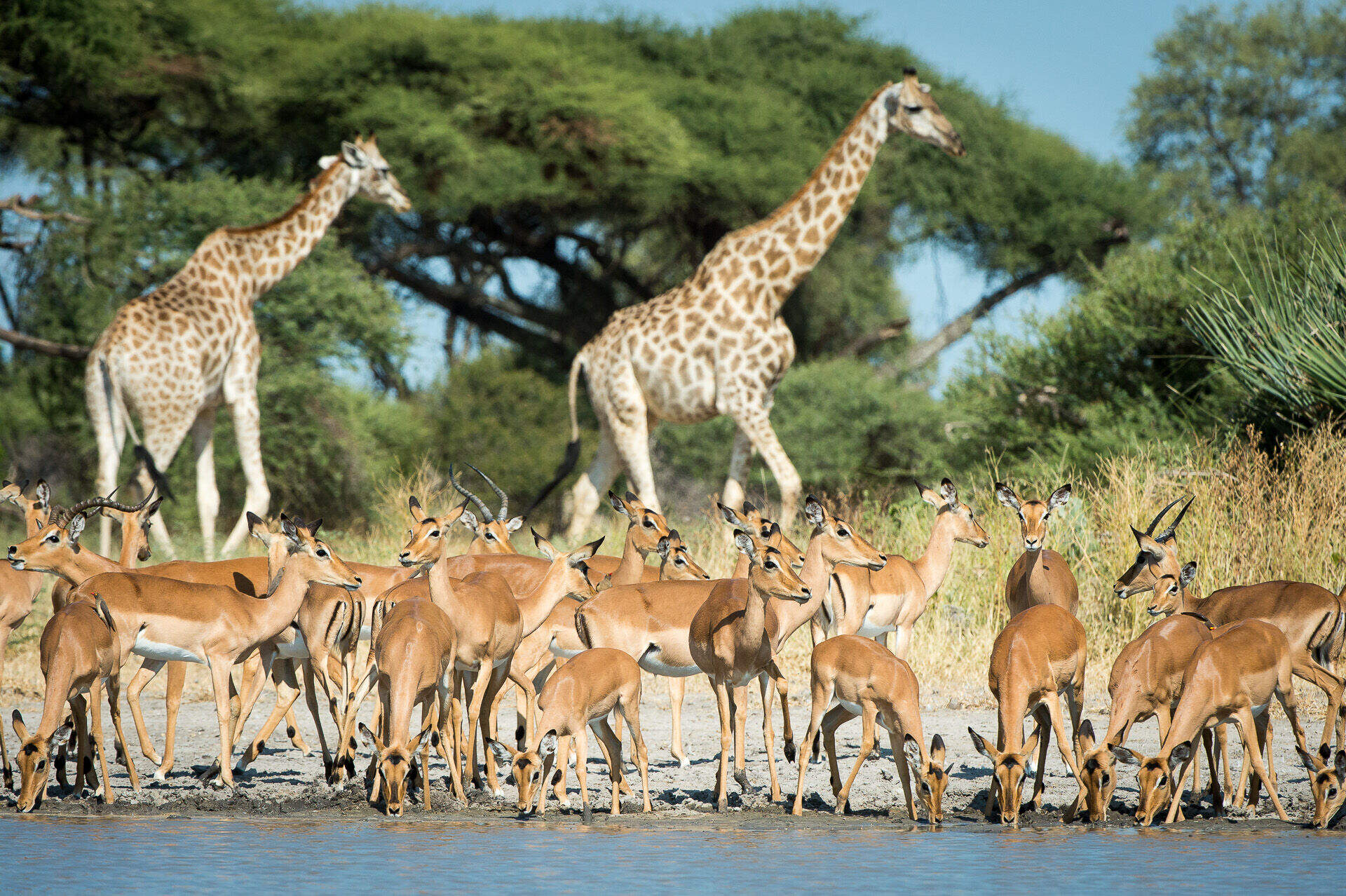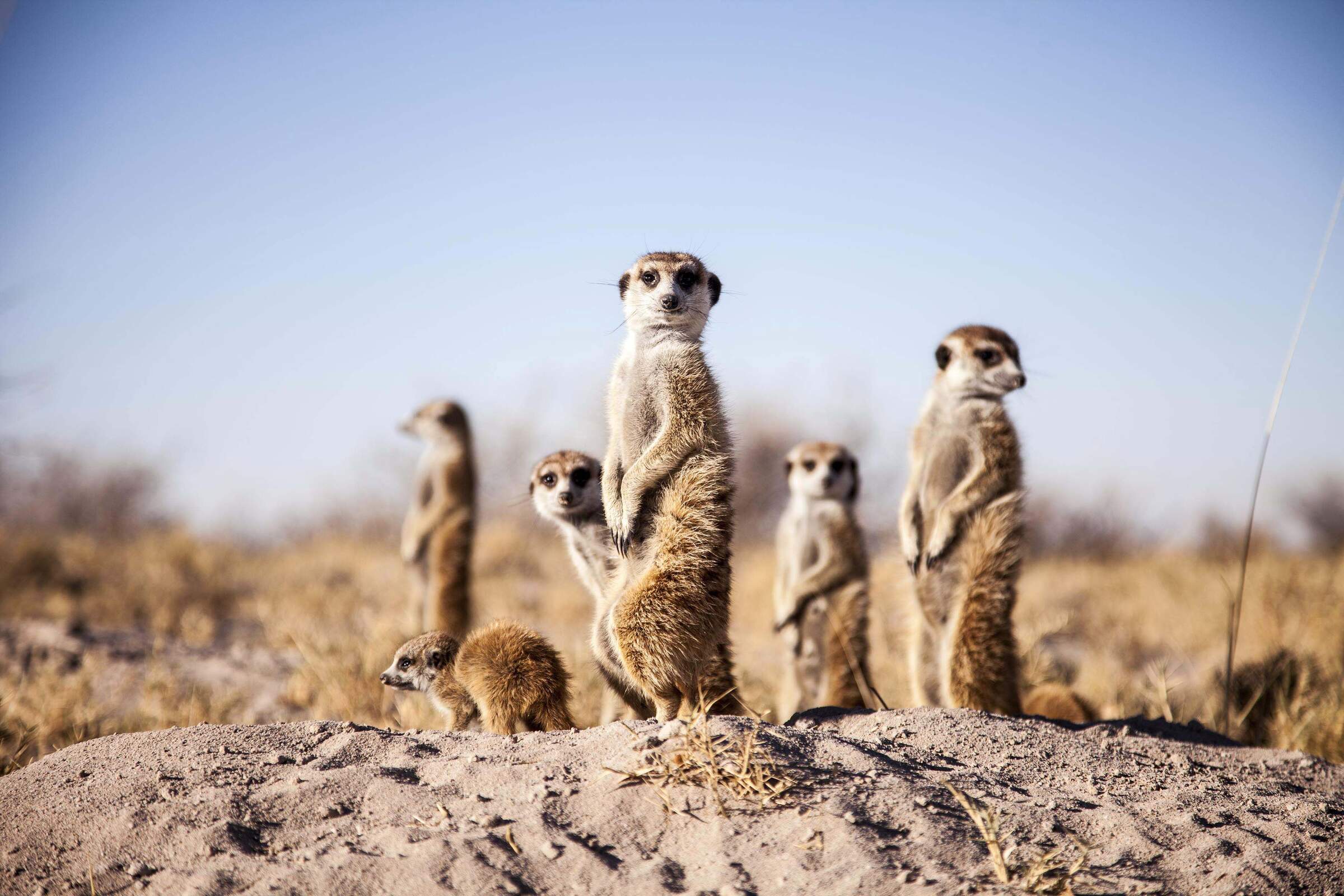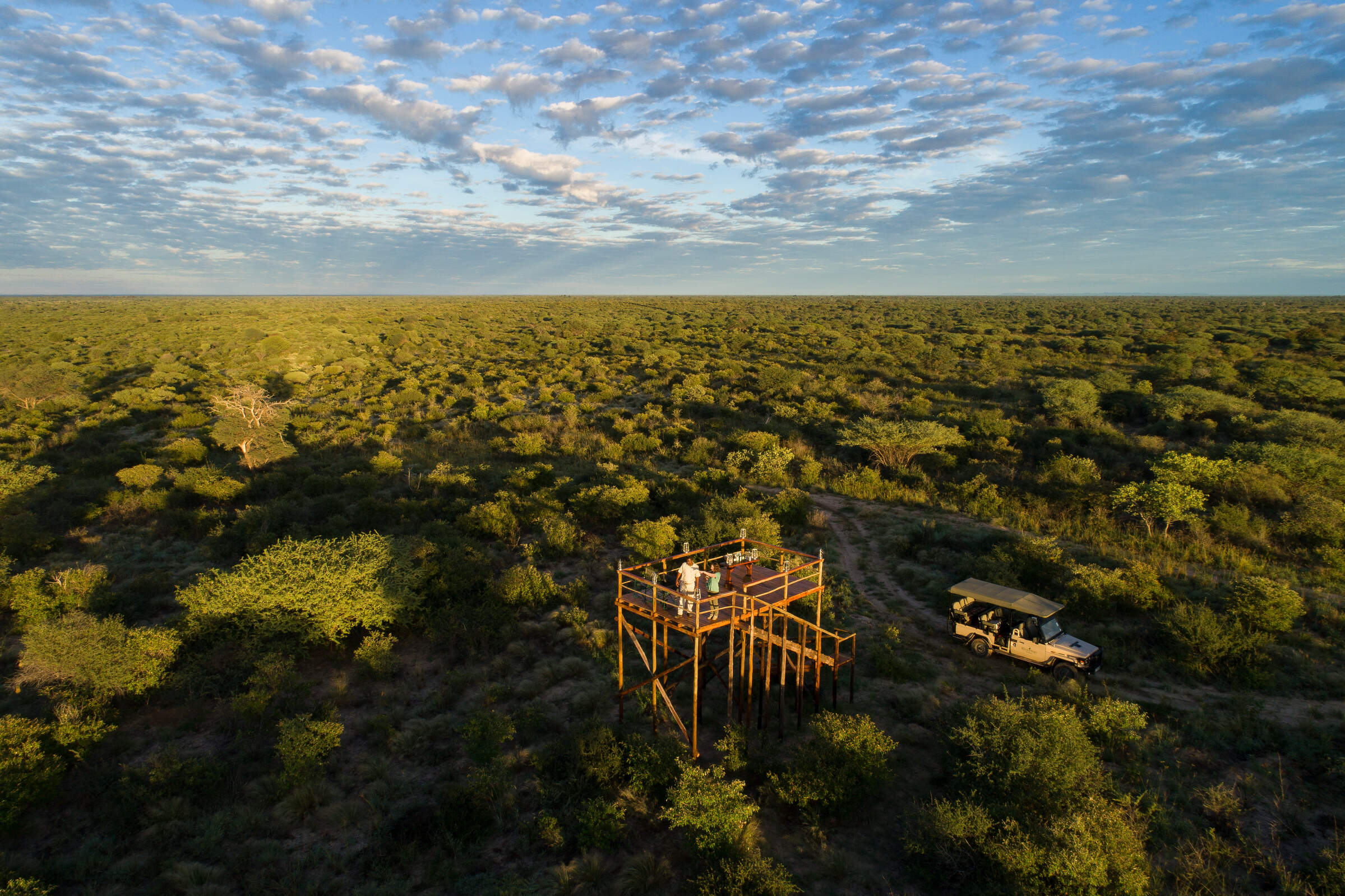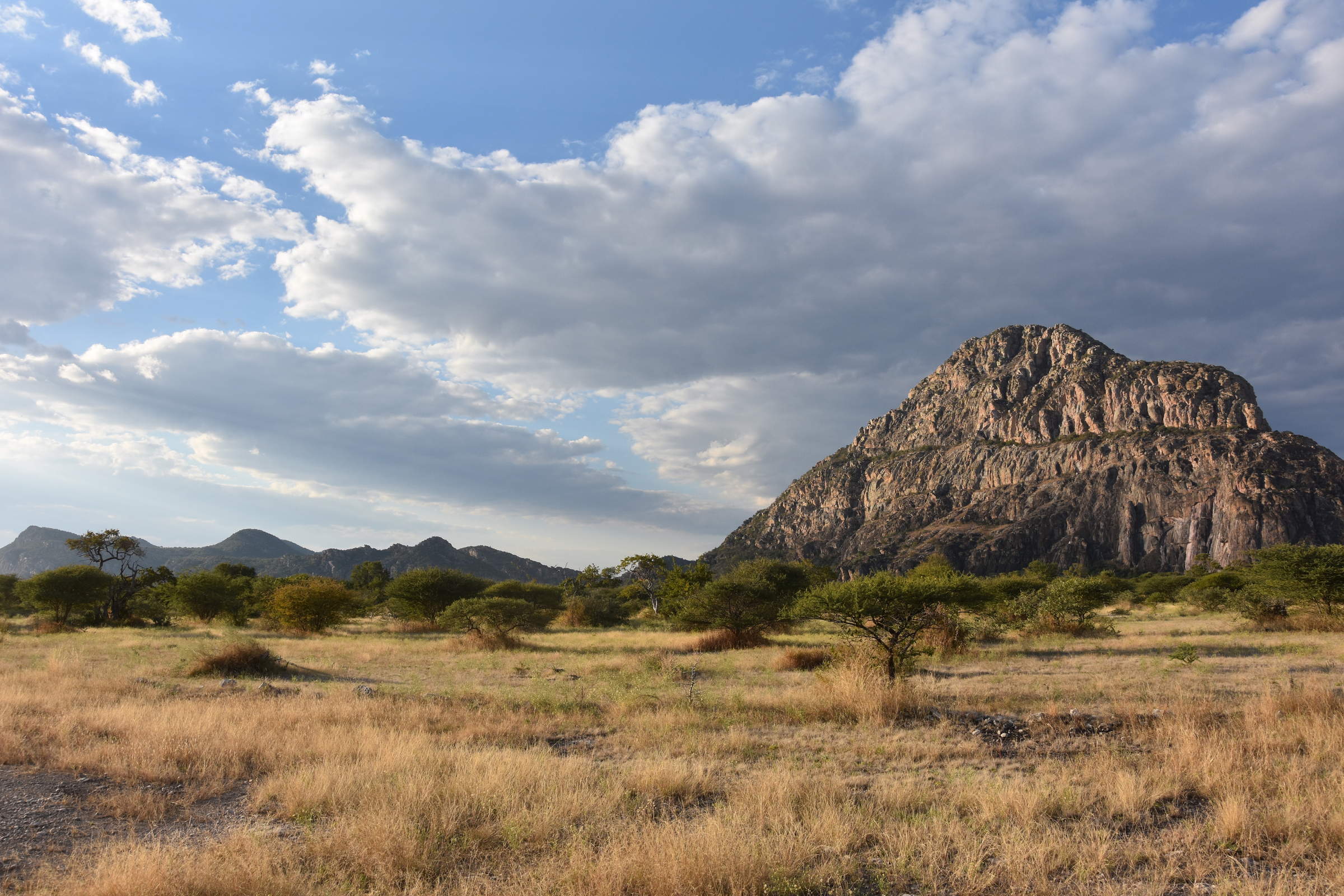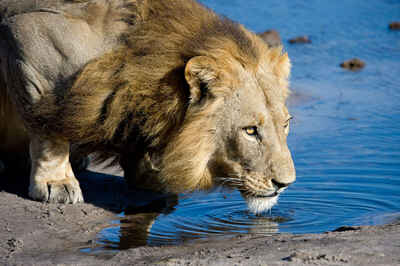
The Kwando-Linyanti - excellent for wildlife.
There is big game...
...as well as fantastic birdlife.
... the younger generation.
The river is great for activities like canoeing...
...and beautiful landscapes.
Kwando-Linyanti area
Kwando-Linyanti area
An untamed wilderness of vast floodplains, meandering waterways and ancient forests, Kwando-Linyanti is rich in predators and superb private reserves.
Listen closely, and the Kwando-Linyanti region comes alive with the sounds of the wild: an elephant trumpeting in the distance, the splash of a hippo slipping into deeper waters, and the chatter of guineafowl scuttling through the grass.
This northern corner of Botswana is a sanctuary where wildlife thrives, woven together by the life-giving waters of the Kwando and Linyanti Rivers. A mosaic of diverse habitats, the landscape is as varied as the species it supports. Huge herds of elephants and buffalo roam freely, zebra and giraffe graze in abundance, and elusive antelope like roan and sable find refuge in the woodlands. This wealth of prey draws formidable predators, from cheetah coalitions to prides of lions and the social African wild dogs. Birdlife dazzles with over 450 species, including endangered wattled cranes and mesmerising carmine bee-eaters.
The Kwando-Linyanti region is spread across four distinct private reserves, each with its own character and charm. The Selinda Reserve is famed for its predator-rich dry season, namesake Selinda Spillway and luxurious camps. The Kwando Reserve, known for its action-packed, big-cat tracking and authentic camps. The Linyanti Reserve, with its riverine woodlands and sandy floodplains, and the Linyanti Enclave (or Chobe Enclave) with its established family safaris and walking trails. Together, they create a tapestry of experiences, ensuring something for every traveller seeking a genuine connection to nature, far from the madding crowd.
Renowned for its high-quality guiding and fantastic safari experiences, Kwando-Linyanti’s private reserves offer a first-class Botswana experience.
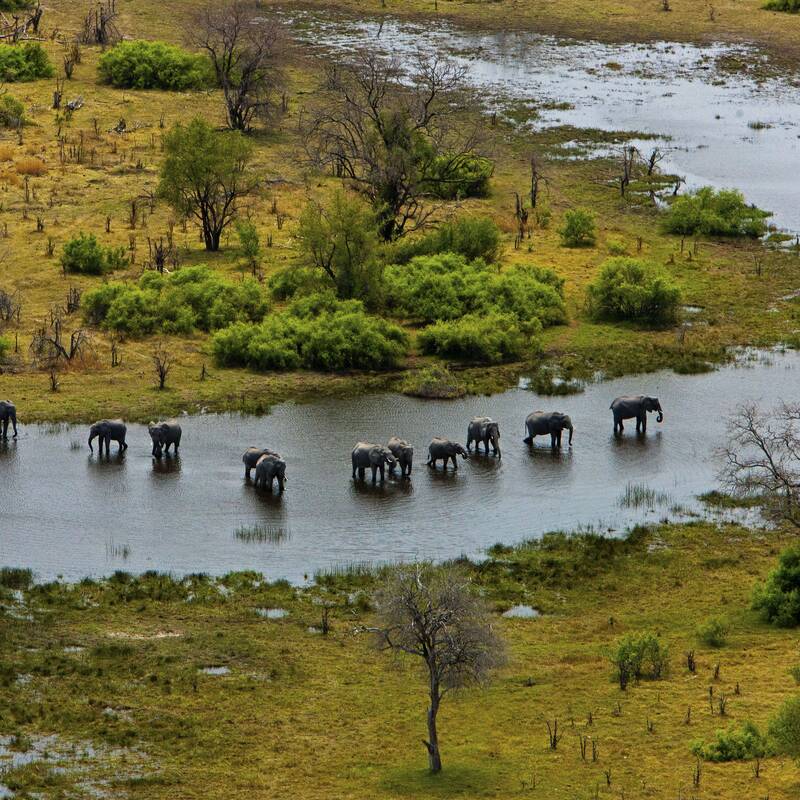
The best safaris to Kwando-Linyanti
In the Kwando, Linyanti, Linyanti Enclave and Selinda reserves, you’ll discover some of Botswana’s most exclusive and thrilling safari experiences.
Picture yourself exploring diverse landscapes, from lush riverine forests to expansive grasslands dotted with wildlife. Here, you can encounter herds of elephants and buffalo, spot rare antelope like roan and sable, and witness the drama of predators such as lions and endangered wild dogs. Stay in intimate camps where expert guides and trackers bring the wilderness to life, whether on game drives, walking safaris, or serene boat trips.
If you’re looking for an unforgettable safari, this is where your adventure begins. Combine a Kwando-Linyanti safari with the Okavango Delta or Chobe National Park for a trip encompassing Botswana’s finest wildlife areas.
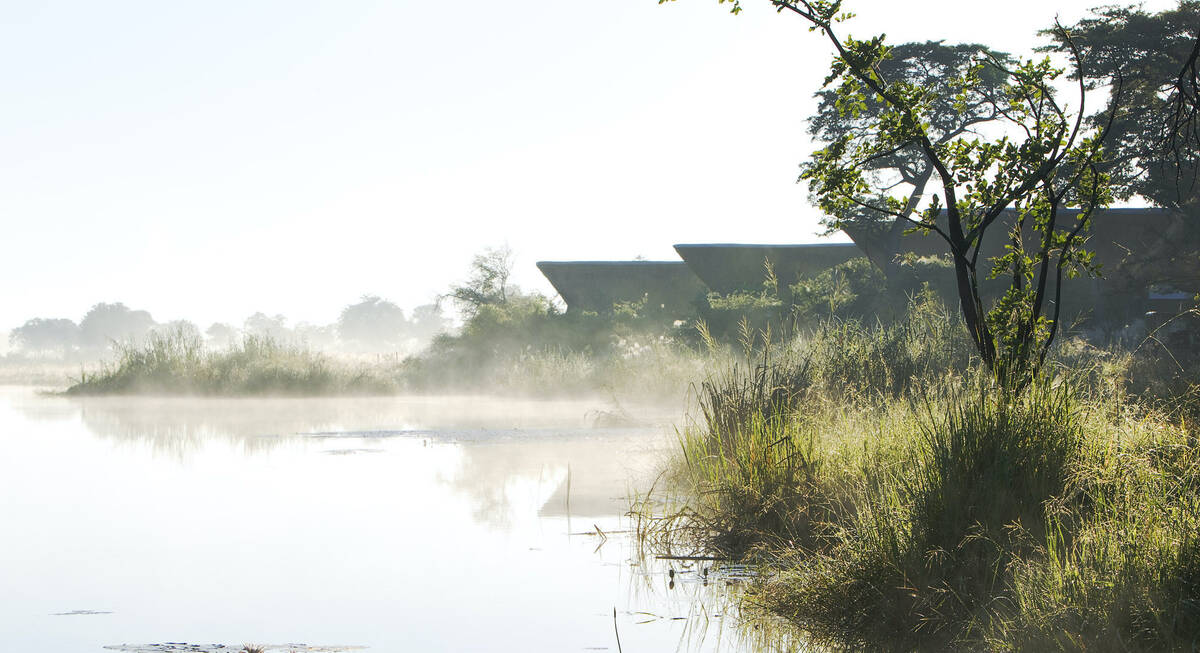
Pangolin Safari
8 days • 3 locations
MAUN AIRPORT TO MAUN AIRPORT
Three relaxed, local feeling camps in pristine settings – the Kwando Reserve and Okavango Delta. Guided by a driver and tracker at each, this a great trip for spotting Botswana’s top predators.
US$9,730 - US$16,340 per person
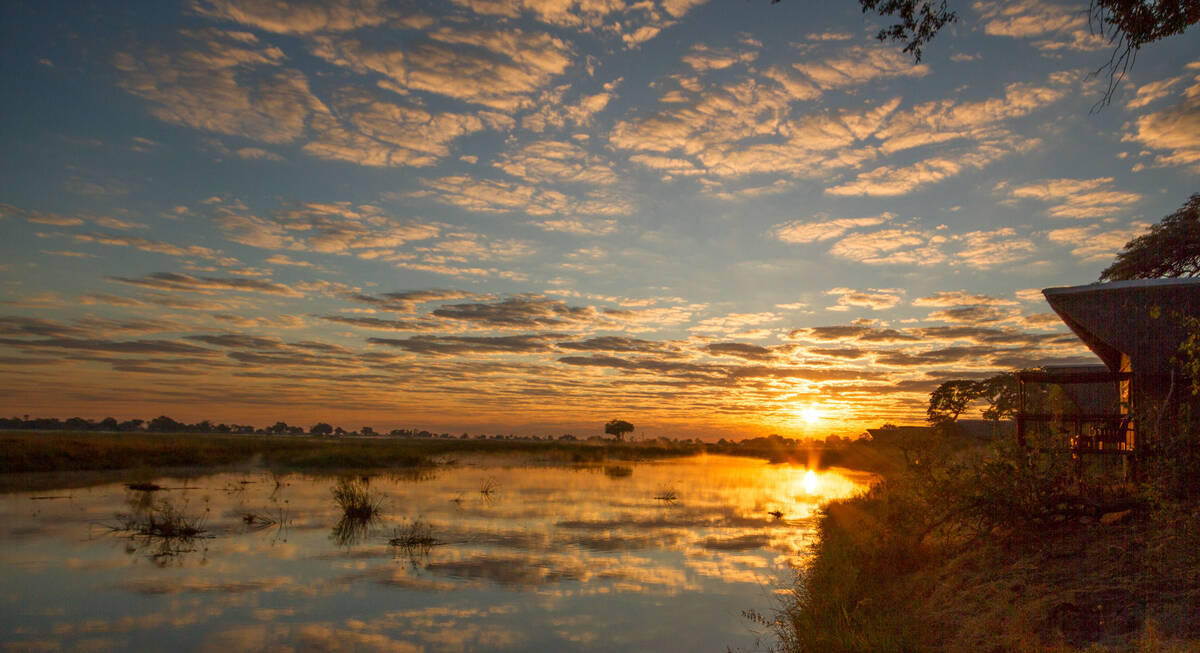
Mopane Squirrel Safari
6 days • 2 locations
MAUN AIRPORT TO MAUN AIRPORT
Visit two wildlife-rich private reserves in an exploration of the Okavango and Kwando regions. Sister camps Splash and Lagoon camp provide a range of immersive activities, and their long-stay discounts make for an excellent-value safari.
US$6,990 - US$11,760 per person
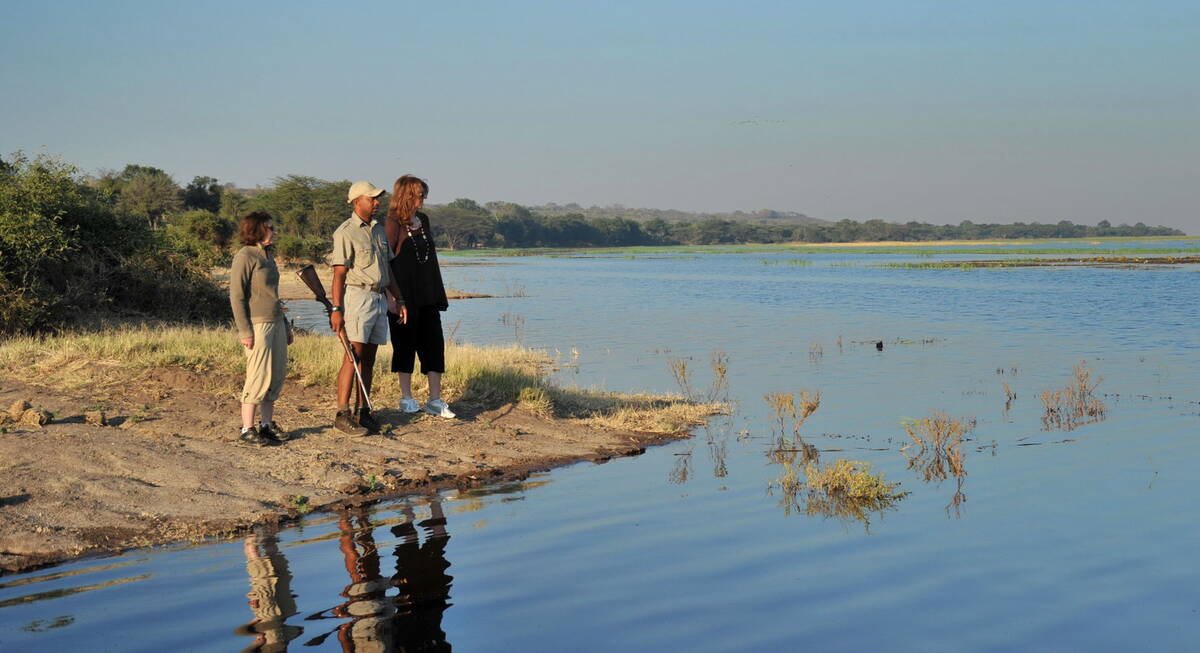
Wild Dog Safari
13 days • 5 locations
KASANE AIRPORT TO MAUN AIRPORT
An in-depth discovery of northern Botswana’s wilderness, from Chobe and the private Kwando Reserve to the Moremi and iconic Okavango Delta with a great variety of activities and wildlife.
US$12,930 - US$21,350 per person
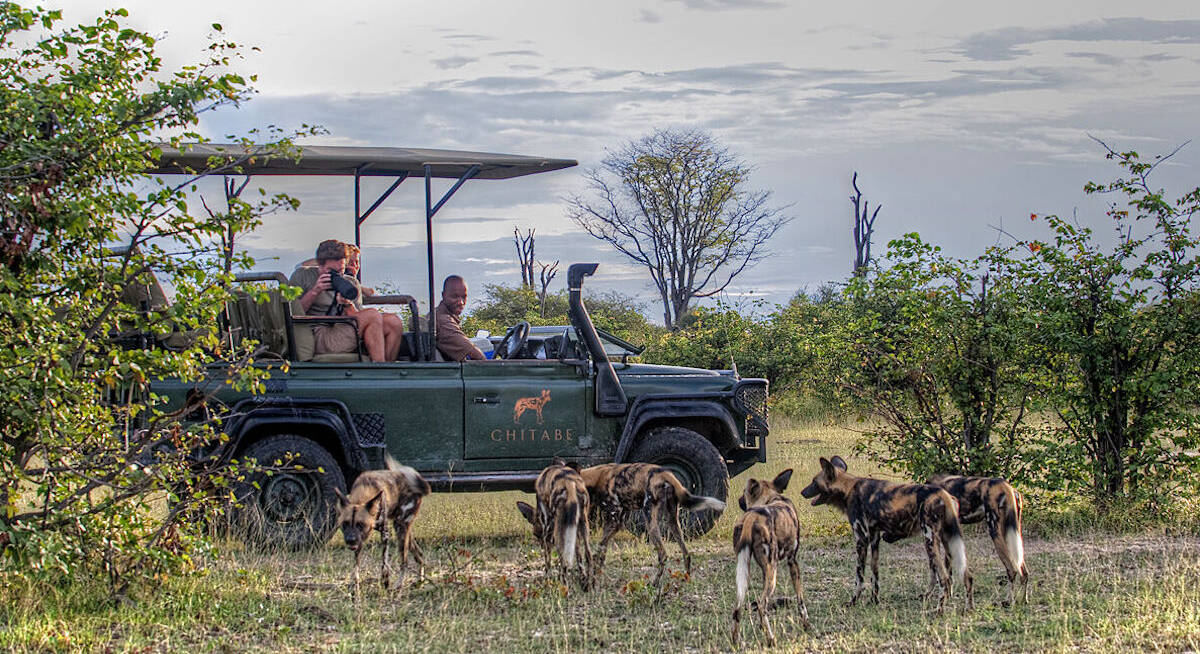
Bushbuck Safari
8 days • 3 locations
MAUN AIRPORT TO MAUN AIRPORT
Discover three of Botswana’s best game-viewing regions with stays in the private Linyanti, Chitabe and Vumbura reserves. Intimate, smart camps offer a range of activities by which to discover these stunningly varied habitats.
US$18,020 - US$31,740 per person
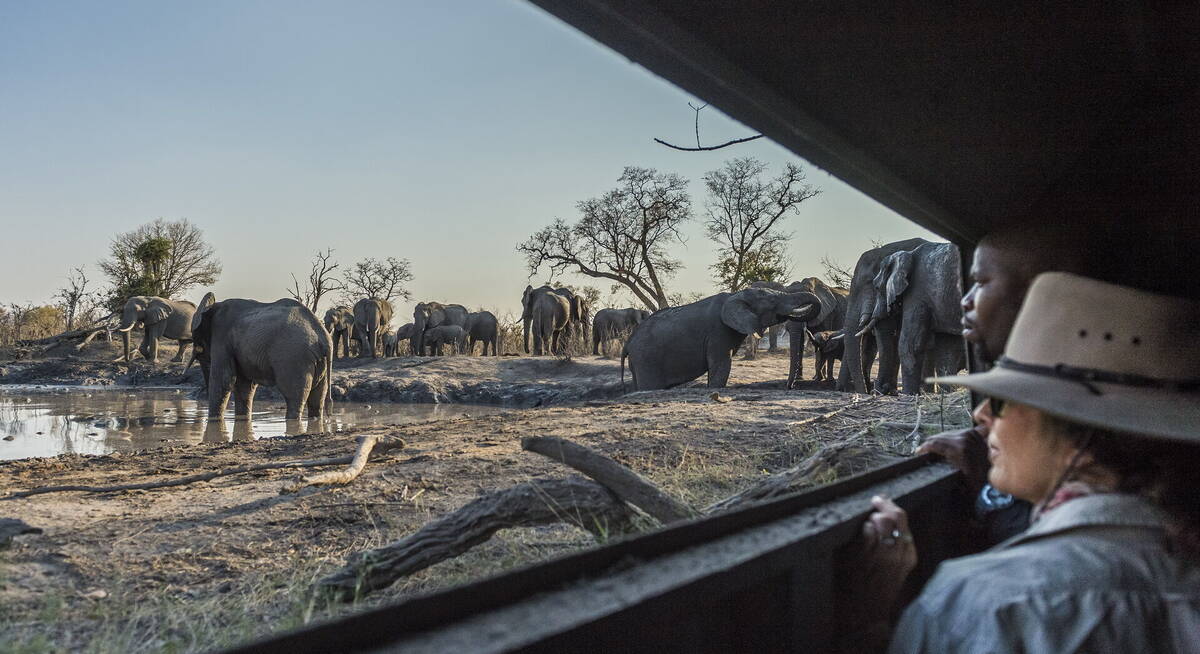
Large-spotted Genet Safari
9 days • 3 locations
MAUN AIRPORT TO MAUN AIRPORT
A luxury safari exploring the Okavango Delta and Linyanti–Savuti, two of the best wildlife viewing areas in Botswana, staying at three top camps renowned for their guiding for a first-class experience.
US$14,230 - US$23,640 per person
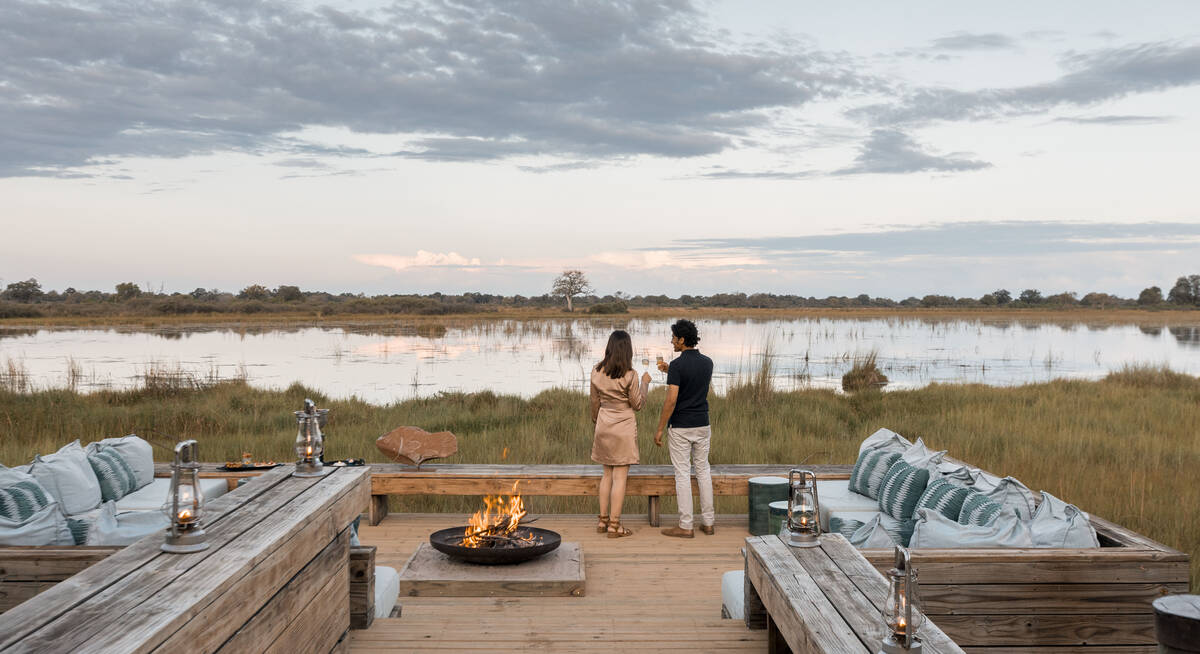
Reedbuck Safari
8 days • 3 locations
MAUN AIRPORT TO MAUN AIRPORT
Focussing on the Okavango Delta and combining the crème de la crème of Botswana’s camps – Zarafa, Vumbura Plains and Mombo – this is one of the finest safari experiences in Africa.
US$23,410 - US$36,280 per person
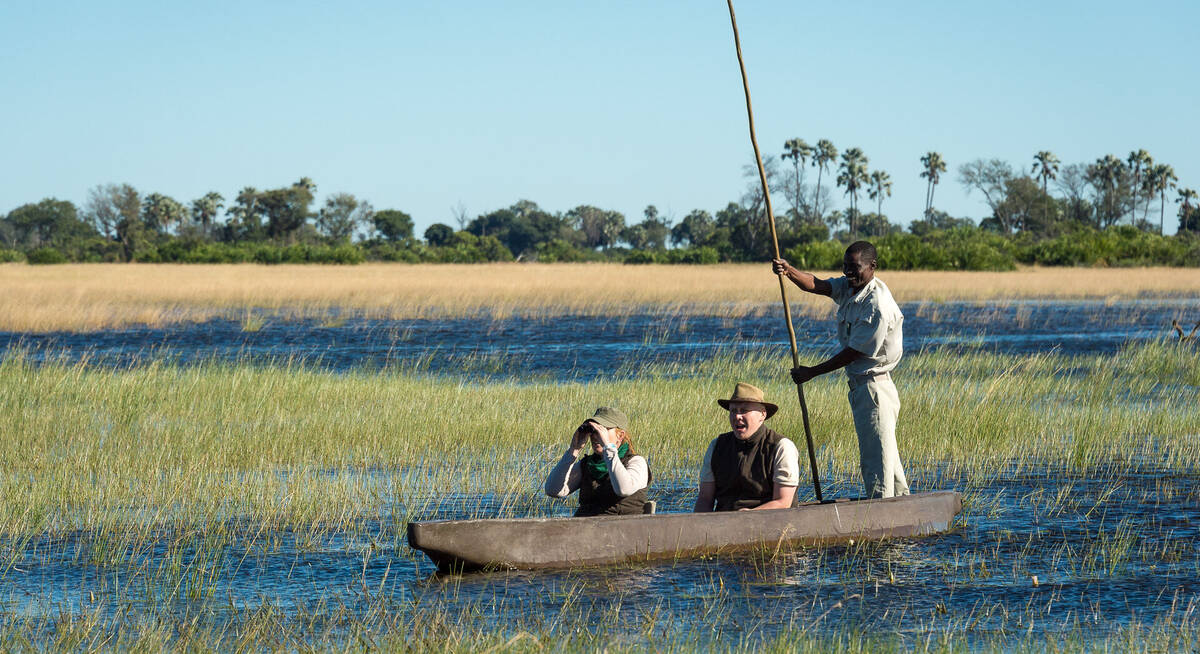
Spotted-necked Otter Safari
6 days • 2 locations
MAUN AIRPORT TO MAUN AIRPORT
Discover the heart of the Okavango Delta and diverse Linyanti, staying in two classic luxury canvas camps in private reserves this is a varied, wildlife-filled safari experience.
US$9,950 - US$14,800 per person
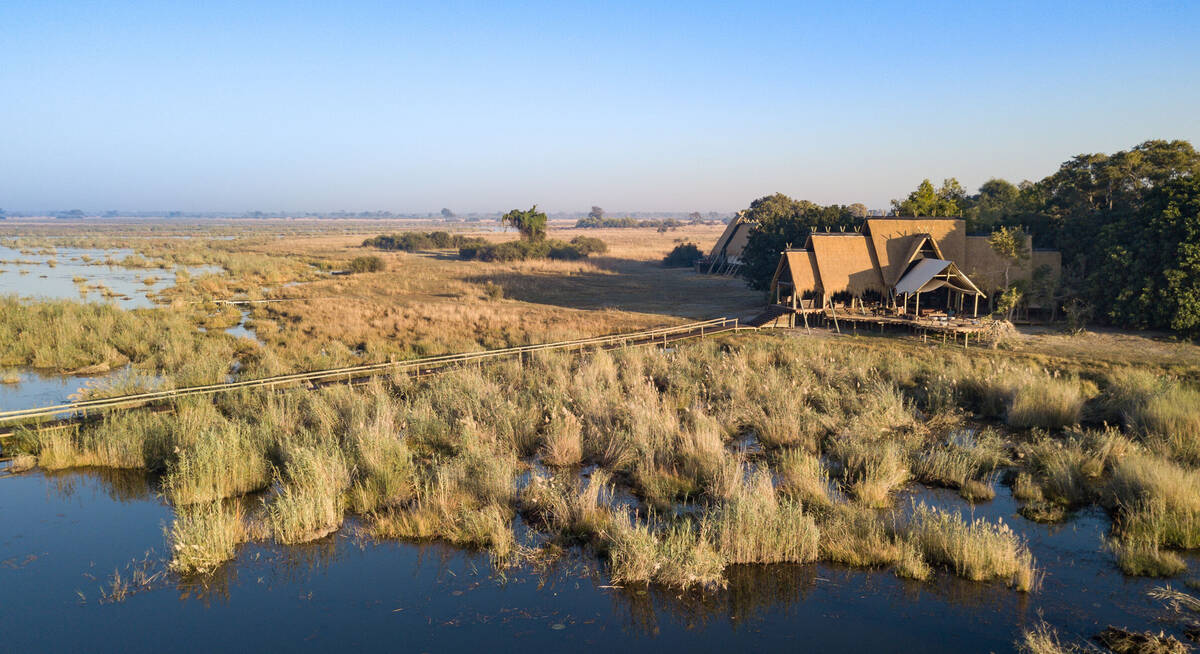
Wildcat Safari
4 days • 2 locations
MAUN AIRPORT TO MAUN AIRPORT
A short, high-quality safari staying at two lavish camps with excellent hospitality and guiding standards. The journey takes you from the wildlife-rich, lush Okavango Delta to dry open plains split by the meandering Selinda Spillway.
US$9,700 - US$17,570 per person
Recent reviews of Kwando-Linyanti safaris
We specialise in crafting exceptional Kwando-Linyanti safaris, but don't just take our word for it – read what our travellers have to say. With over 600 unedited reviews from Kwando-Linyanti safaris alone, you can trust in the genuine feedback from those who've travelled to the area with us.
Whether it's the dramatic predator sightings in the Selinda Reserve, the peaceful waterways of the Linyanti, or the expertly guided camps in the Kwando region, Expert Africa travellers rave about these area:
"The safari experience at these camps was unbeatable, with more game and more interaction with their behaviour but none of the intrusion from other game vehicles experienced at other destinations."
Explore the unedited reviews of our tailor-made Kwando-Linyanti safaris and let us create the perfect adventure for you!
Arrived 10 Mar 2025, 12 nights
"My Mar 2025 trip"
Overall rating: Excellent
Arrived 5 Feb 2025, 13 nights
"A good but weather affected trip "
Overall rating: Good
Arrived 6 Nov 2024, 11 nights
"My Nov 2024 trip"
Overall rating: Excellent
Arrived 2 Nov 2024, 13 nights
"Magical 2 week Botswana trip November 2024"
Overall rating: Excellent
Arrived 29 Oct 2024, 13 nights
"My Oct 2024 trip"
Overall rating: Excellent
Arrived 25 Oct 2024, 11 nights
"Botswana Okavango Trip Oct/Nov 2024 trip"
Overall rating: Excellent
Arrived 24 Oct 2024, 12 nights
"My Oct 2024 trip"
Overall rating: Excellent
Arrived 15 Oct 2024, 11 nights
"My Oct 2024 trip"
Overall rating: Excellent
Arrived 12 Oct 2024, 12 nights
"Our Oct 2024 trip"
Overall rating: Excellent
Arrived 11 Oct 2024, 12 nights
"My Oct 2024 trip"
Overall rating: Excellent
Where to stay in Kwando-Linyanti
The Kwando-Linyanti area boasts some of our favourite Botswana camps and lodges, each offering special features to enhance your safari experience.
Meaning ‘wide open spaces’, Lebala Camp provides prime access to wildlife-rich floodplains, while Lagoon Camp, set along the Kwando River, is ideal for spotting hippos from your tent before heading out to track wild dogs. Selinda Explorers Camp is a wonderfully refined, classic safari experience, with first-class guiding, food and service, while families and private groups, will love the luxurious, exclusive-use options: Selinda Suite and Zarafa Dhow Suite. Whether you seek adventure or serenity, camps in Kwando-Linyanti promise a memorable stay.

Lagoon Camp
Within the vast Kwando Reserve, renowned for its wild dogs, Lagoon Camp offers excellent game viewing that focuses on predators.
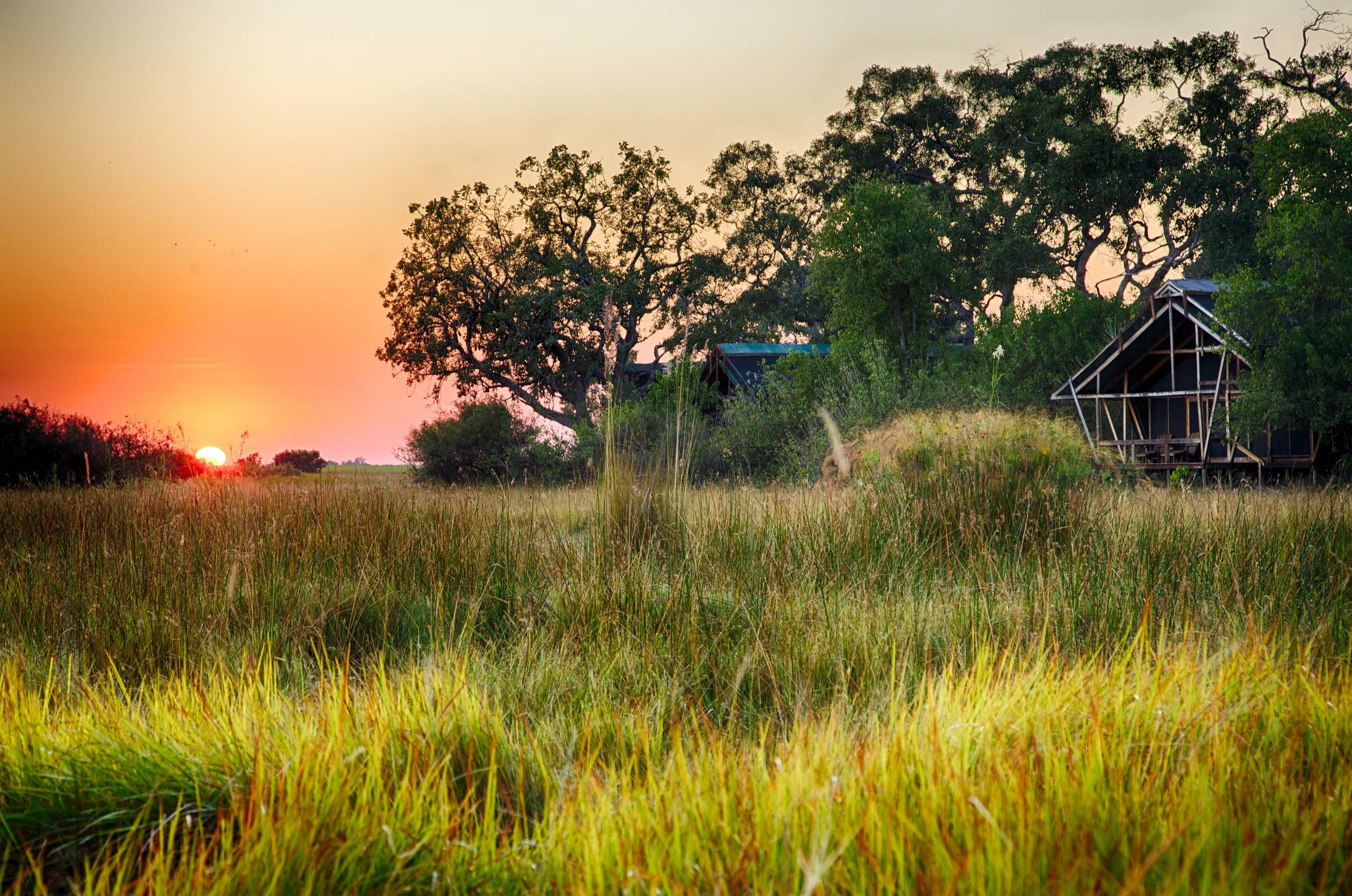
Lebala Camp
With enthusiastic guides and trackers, Lebala – in a vast private reserve – is particularly well-placed for seeking wild dogs.
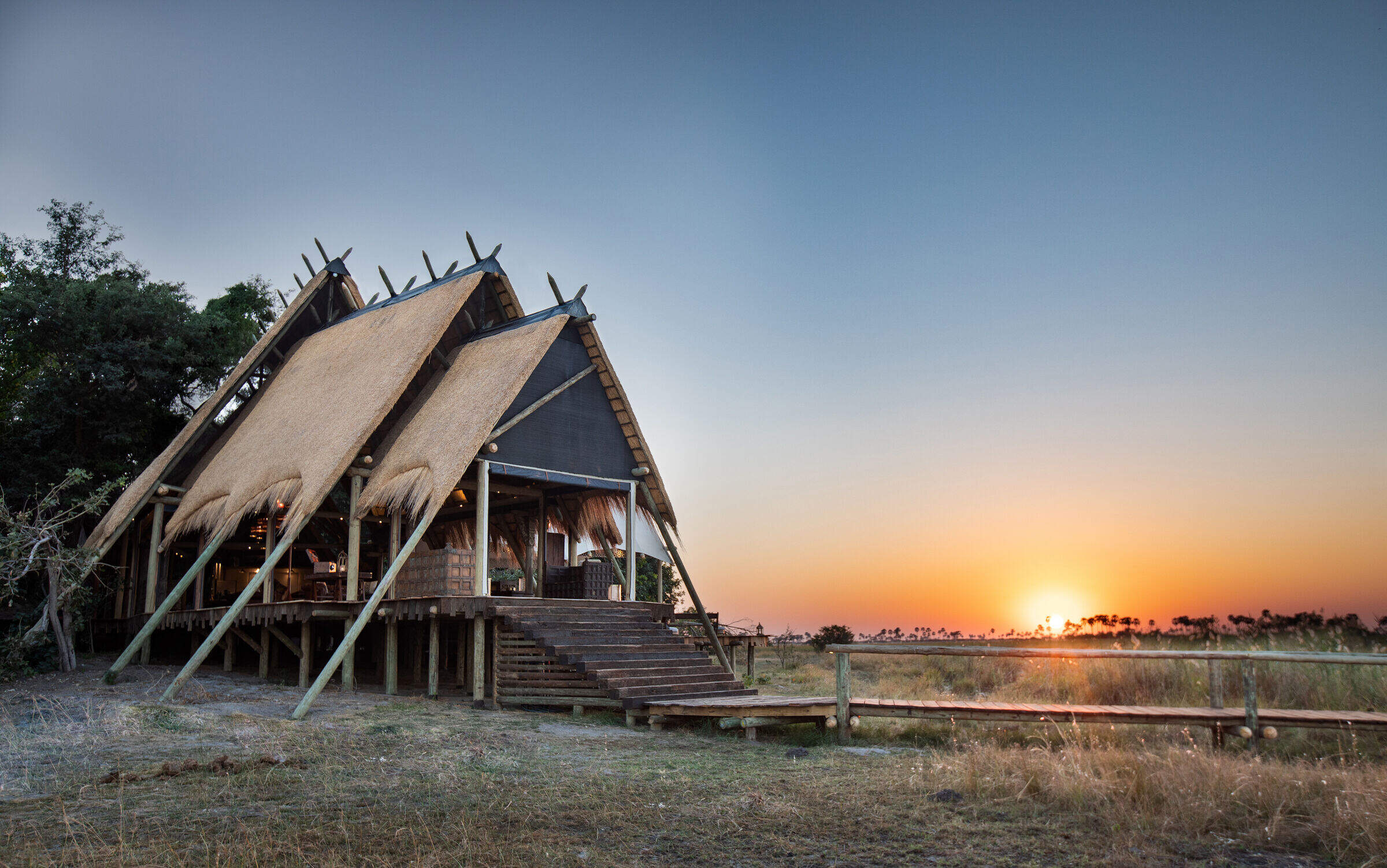
Selinda Camp
In an attractive area that is particularly rich in game between June and November, the luxurious Selinda Camp caters particularly well for photographers.
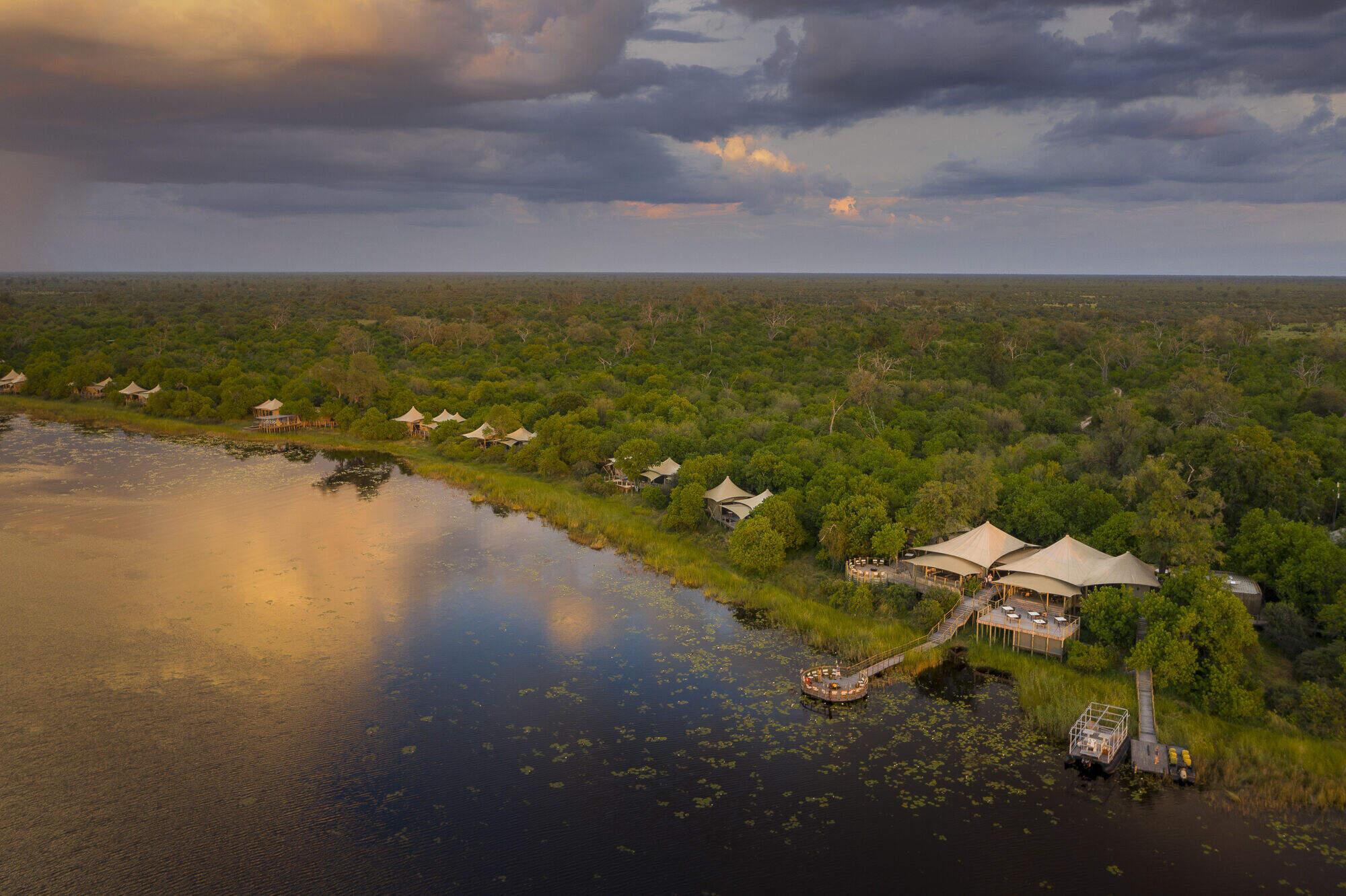
DumaTau
DumaTau, in the private Linyanti Reserve, offers game drives, seasonal boat cruises and walks. Wildlife safaris here are quite seasonal, and are at their best during the height of the dry season, between June and October.
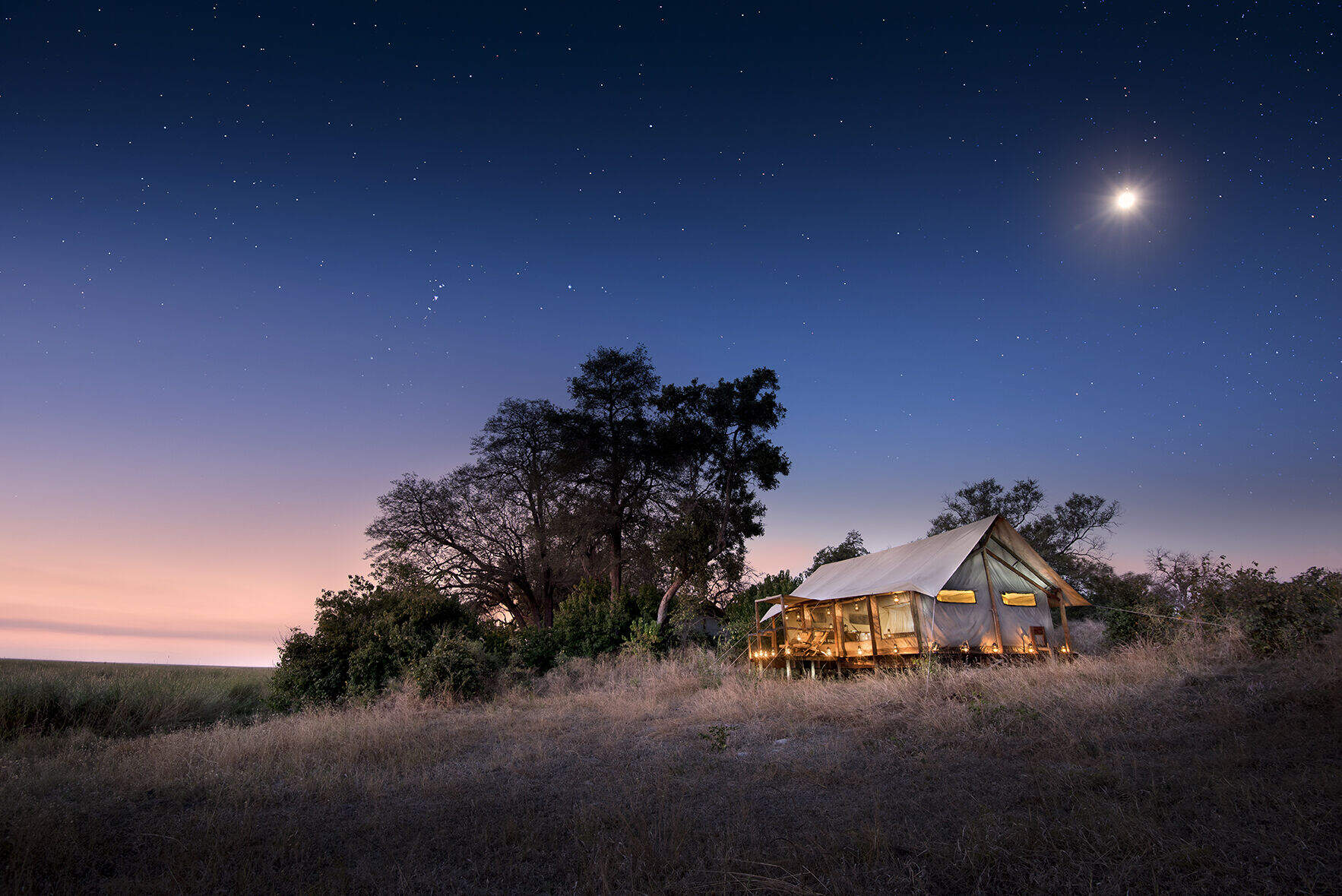
Linyanti Bush Camp
An increasingly rare find in Botswana, Linyanti Bush Camp blends relative simplicity with numerous activities and very good guiding.
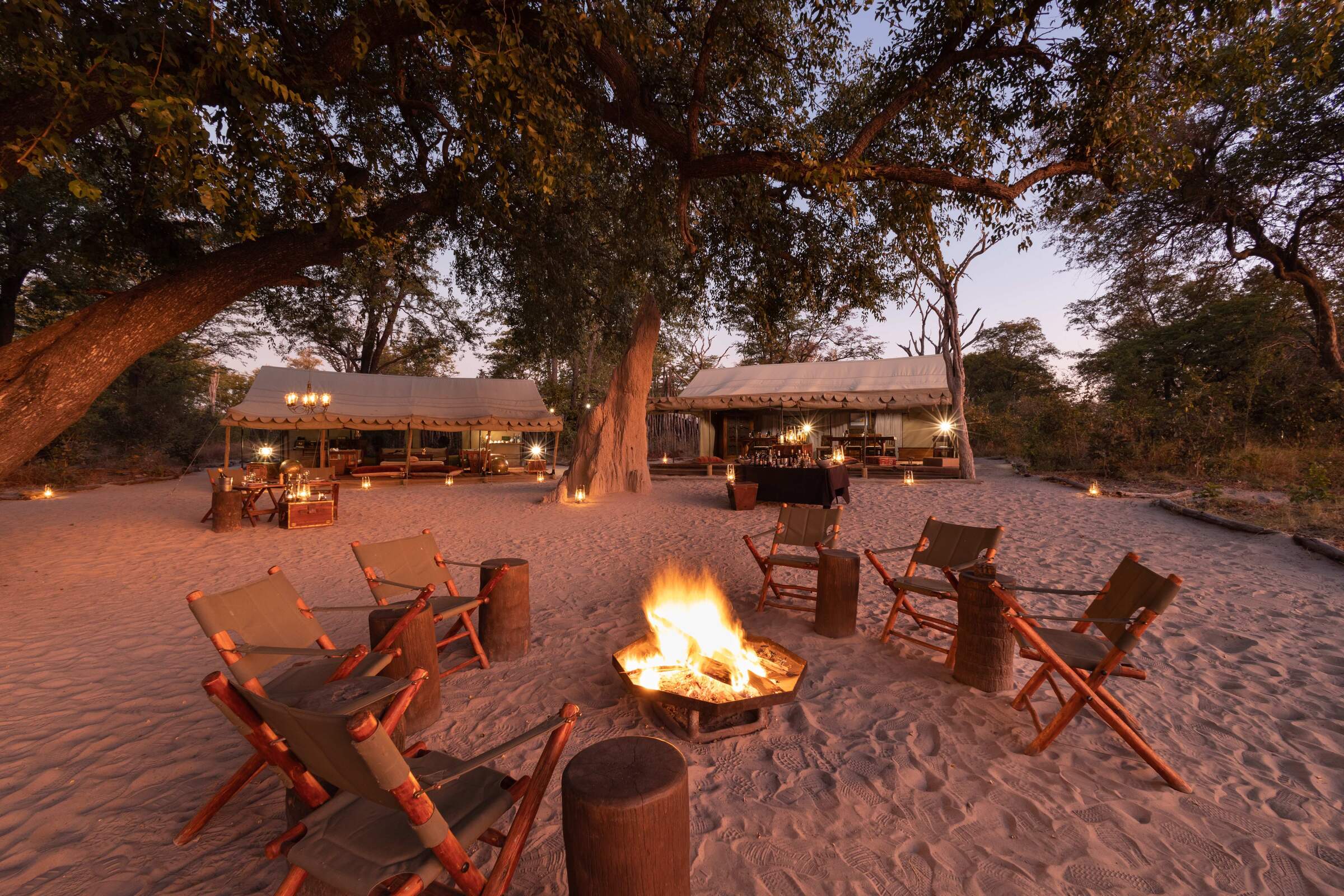
Selinda Explorers Camp
The luxurious, traditional tented Selinda Explorers Camp offers a mix of walking, canoeing and game drives led by really top notch guides in a game-rich area.
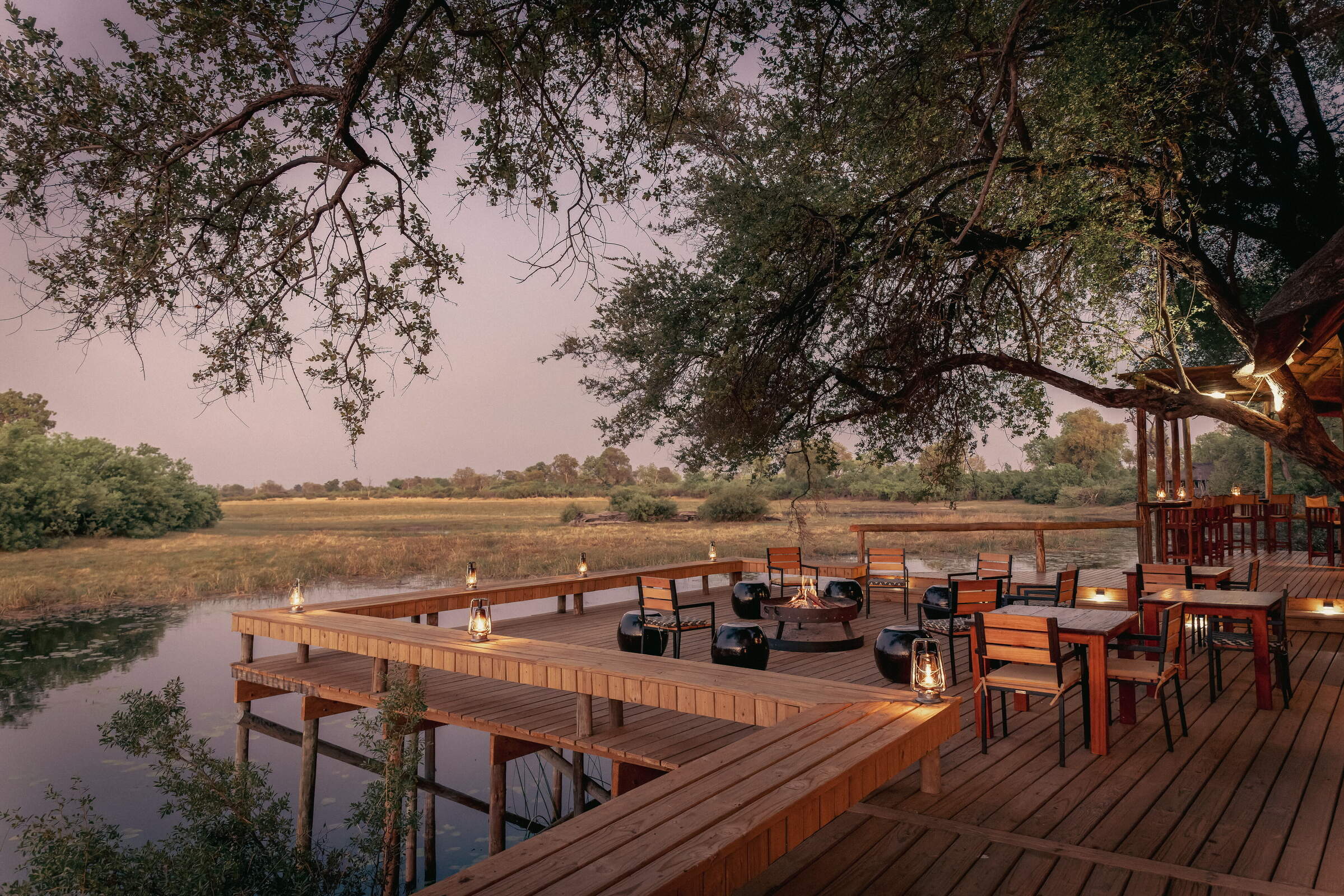
Savuti Camp
Set above the Savuti Channel, the refurbished seven-room Savuti Camp offers the potential for viewing large herds of elephant and significant lion encounters.
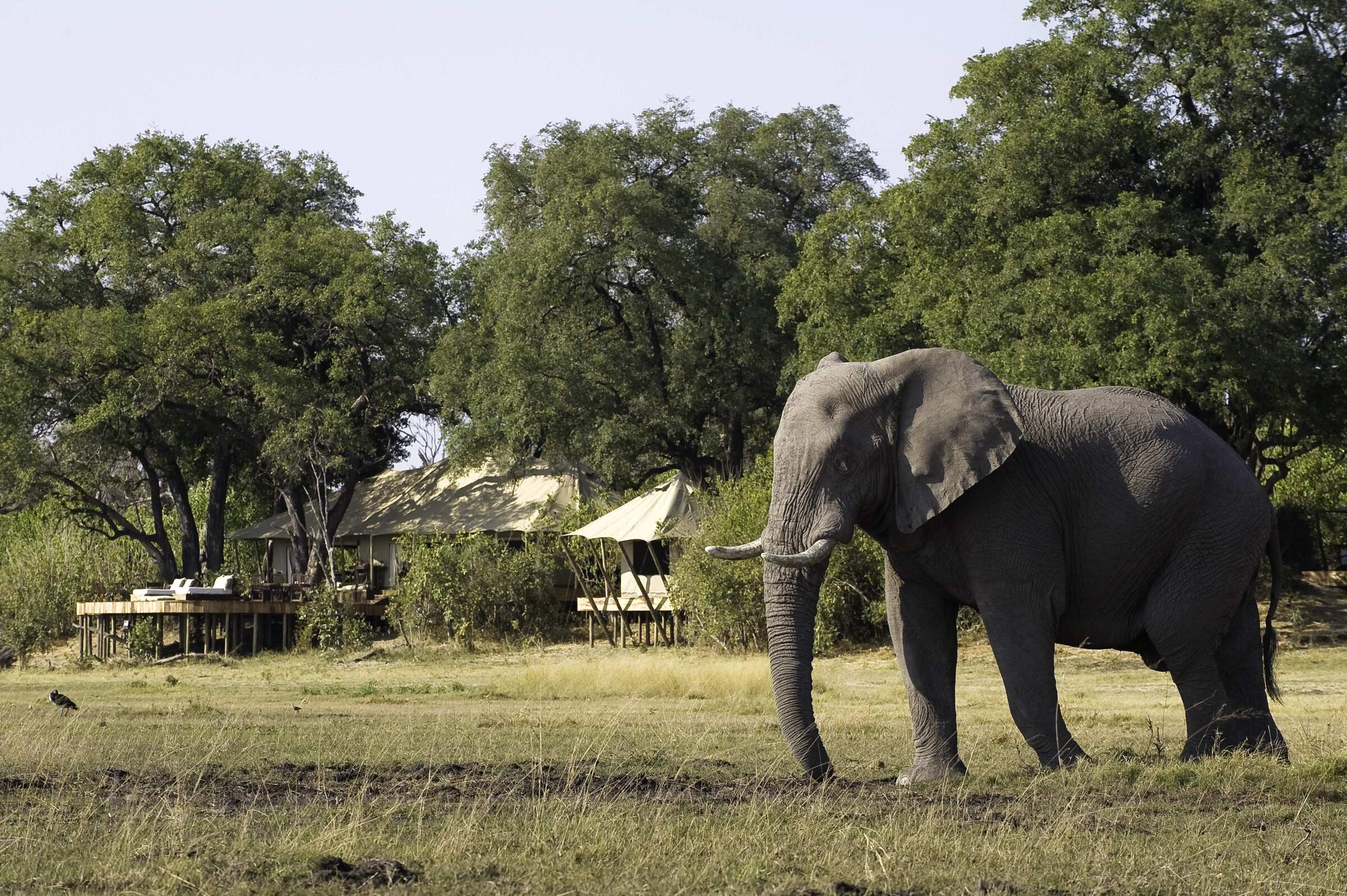
Zarafa Camp
Zarafa is an exclusive camp overlooking the scenic Zibadianja Lagoon within the Selinda Reserve, a particularly game-rich area between June and early November.
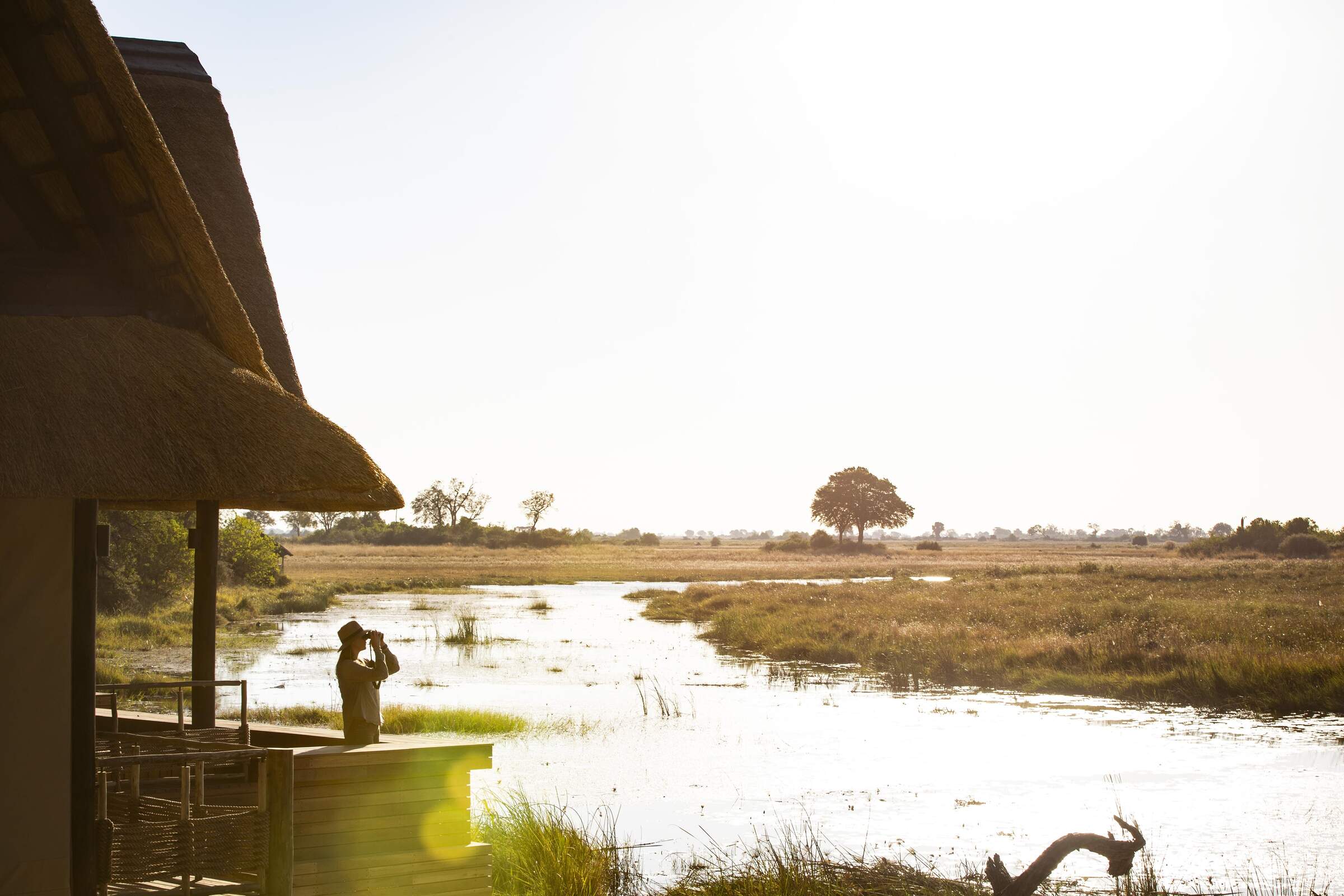
Kings Pool
King’s Pool is a top-end luxury safari camp with a price tag to match; the game viewing can be very good during the dry season.
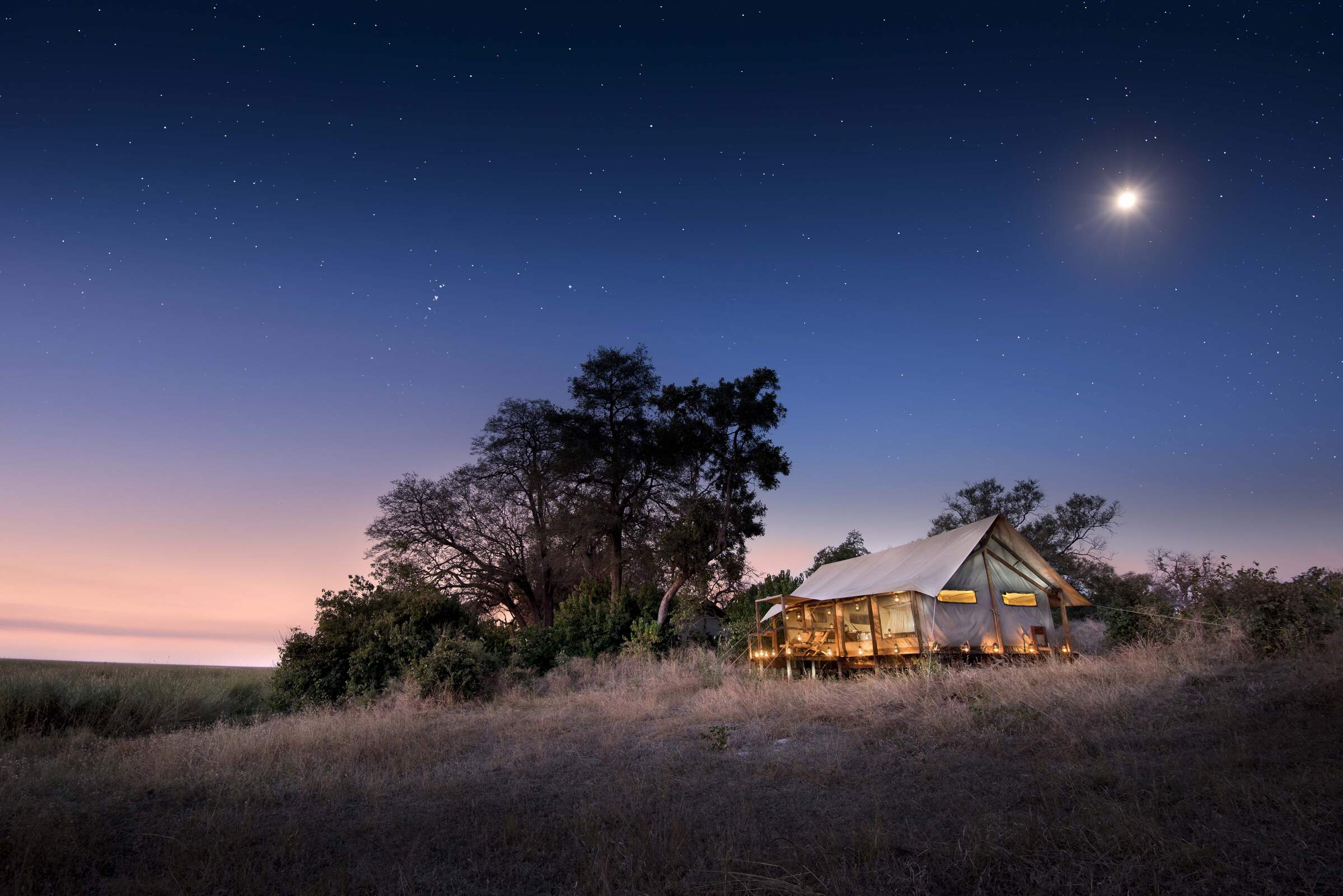
Linyanti Ebony
Independently owned and run, the small Linyanti Ebony sits on the same site as Linyanti Bush Camp, with similarly high standards of guiding, and a strong emphasis on the wildlife experience.

Linyanti Expeditions
Tip-top guiding. In tune with the habitat. Down-to-earth, authentic camp comfort. A place of wilderness safari harmony.
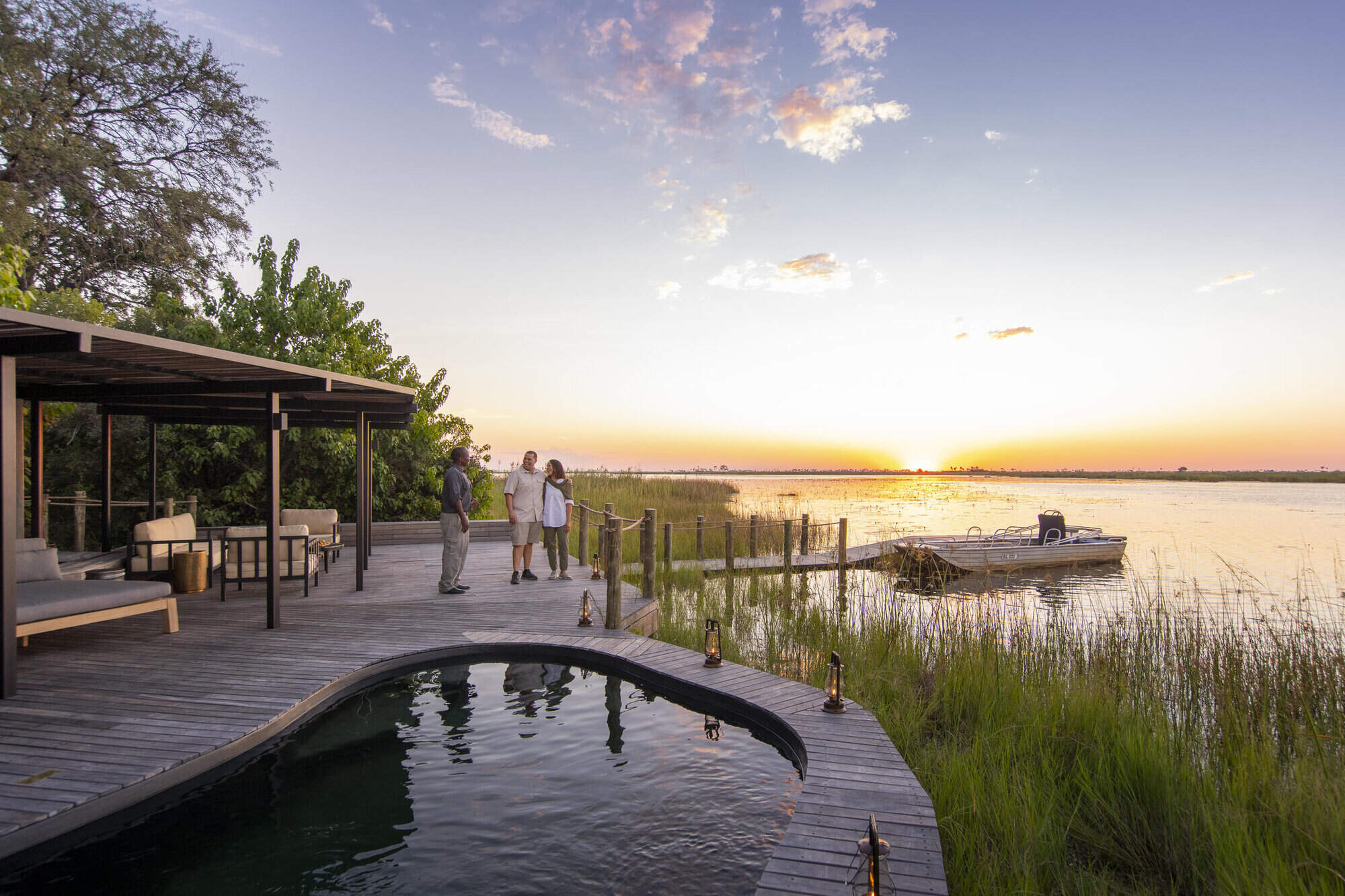
Little DumaTau
Small and sophisticated, Little DumaTau lies adjacent to its larger sibling in the private Linyanti Reserve, overlooking a beautiful lagoon.
Our travellers’ wildlife sightings in Kwando-Linyanti
The Kwando, Linyanti, and Selinda reserves are home to some of Botswana’s most spectacular wildlife.
You can see massive herds of elephants and buffalo, particularly around the rivers and floodplains. Plains game such as zebra, wildebeest, and giraffe are abundant, while rarer species like roan and sable antelope find refuge in the dry woodlands. This wealth of prey supports thriving predator populations, including lions, leopards, cheetahs, and African wild dogs.
Our citizen science project has been collecting real-time wildlife sightings data since 2018. With thousands of surveys across Kwando-Linyanti, we offer up-to-date insights on where to see key mammals. This data allows us to provide tailored safaris with the best opportunities to see Africa’s finest wildlife. Click on an animal below for the latest sightings in this area.

100% success

99% success

98% success

95% success

94% success

92% success

82% success

67% success

60% success

45% success

43% success

40% success

39% success

12% success

3% success

1% success
When to go to the Kwando-Linyanti area
The Kwando, Linyanti, and Selinda Reserves have two distinct seasons.
The dry season (May to October) offers cooler temperatures and clear skies, perfect for wildlife viewing. Animals gather around permanent water sources like the Kwando and Linyanti rivers, providing excellent game-watching opportunities. The Selinda Spillway becomes a wildlife hotspot.
The wet season (November to April) brings warmer temperatures and occasional thunderstorms, transforming the landscape into lush greenery. Wildlife disperses, but the eastern and southern Selinda Reserve still offer good sightings. This season is ideal for birdwatching, with many migratory species. The Kwando River and Linyanti floodplains attract water-loving species like red lechwe and sitatunga.
Check out our month-by-month detailed descriptions below if you’re flexible on travel time, and read our comments on the impact of the seasons on wildlife and your safari experience:
Jan
Feb
Mar
Apr
May
Jun
Jul
Aug
Sep
Oct
Nov
Dec
Kwando-Linyanti area in January
January marks the peak of the rainy season in the Kwando, Linyanti, and Selinda Reserves. Evening thunderstorms bring short but intense rains, cooling the air while temperatures remain warm. Wildlife disperses across the lush landscape due to the abundant water, making game viewing more challenging, though the southern and western parts of the Selinda Reserve still offer rewarding sightings.
The Kwando River and Linyanti floodplains attract water-loving species such as red lechwe, sitatunga, and waterbuck. Migratory birds thrive during this time, offering incredible birdwatching opportunities. The vibrant greenery creates stunning photography backdrops, and lower rates make January a great choice for budget-conscious travellers seeking a quieter, greener safari.
- Warm temperatures with occasional thunderstorms
- Spectacular birdlife, including migratory species
- Wildlife dispersed across lush floodplains
- Zebra and wildebeest migration in full swing
- Good availability at lodges and camps
Our view
A good time to visit, with pros & cons
Weather in January
Kwando-Linyanti area in February
February continues the rainy season with heavy rains and a humid atmosphere. The landscape is vibrant and teeming with life. Insects and smaller animals become more visible, while many species are raising their young, making for fascinating wildlife encounters. The Selinda Spillway and Zibadianja Lagoon are magnets for diverse wildlife during this time.
Thick vegetation and tall grasses can make it harder to spot larger animals, but water-based activities like boat cruises along the Kwando and Linyanti rivers offer superb birdwatching. The reserves’ papyrus reed-beds are home to elusive species like sitatunga, while buffalo and elephants frequent the floodplains. With fewer visitors, February is perfect for those looking for a more intimate safari experience.
- Warm with occasional thunderstorms
- Young animals abundant across the reserves
- Dispersed wildlife across the lush terrain
- Birds thriving, many in breeding plumage
- Excellent camp availability and low visitor numbers
Our view
This is not a great time to visit
Weather in February
Kwando-Linyanti area in March
March marks the tail end of the rainy season, with sunny days becoming more frequent and occasional afternoon thunderstorms still sweeping through. The landscape remains lush, with many animals finishing raising their young. Predators like lions and wild dogs are more active, taking advantage of plentiful prey.
Birdwatching is still rewarding, although some migratory species start to leave as the season progresses. The Kwando River and its channels provide excellent fishing and wildlife viewing opportunities. As the rains taper off, game drives become more productive, particularly in open areas of the reserves.
- Variable weather with clearer skies and rains decreasing
- Wildlife well-fed and thriving in lush surroundings
- Birdlife remains spectacular, though migrants begin to leave
- Lower rates and fewer visitors at camps
Our view
A good time to visit, with pros & cons
Weather in March
Kwando-Linyanti area in April
April is a transitional month in the Kwando, Linyanti, and Selinda Reserves, marking the shift from the wet to dry season. Rainfall becomes less frequent, giving way to clear skies and a verdant landscape. Night temperatures start to drop, especially in areas further from water.
As vegetation begins to thin, wildlife viewing improves, with increased predator-prey activity around water sources. The Selinda Spillway becomes a focal point for diverse wildlife, including elephants, buffalo, and various antelope species. Predator activity starts to become more visible, particularly around permanent water sources. Walking safaris and boat cruises offer unique ways to explore the ecosystem. With the shoulder season starting, April provides good value and a mix of lush scenery and growing wildlife activity.
- Cooler evenings with occasional light rain
- Selinda Spillway ideal for diverse wildlife sightings
- Good predator-prey interactions observable
- Excellent conditions for walking safaris and boat trips
- Shoulder season rates make this a popular month
Our view
A good time to visit, with pros & cons
Weather in April
Kwando-Linyanti area in May
May is one of the best months to visit the Kwando, Linyanti, and Selinda Reserves. With almost no rain, temperatures cool further in the mornings and evenings, increasing predator activity. Wildlife begins to concentrate around permanent water sources like the Linyanti and Kwando rivers, providing superb game viewing opportunities, especially of elephants and buffalo.
The Selinda Reserve’s diverse landscapes attract a variety of species, and walking safaris in the Kwando Reserve provide close-up wildlife encounters. Crisp, clear air enhances photography, capturing the vibrant wildlife and scenic beauty. May offers a balance of fantastic wildlife sightings, pleasant weather, and the final stretch of shoulder-season rates.
- Cool mornings and evenings, minimal rain
- Excellent predator activity and game viewing
- Crisp air perfect for photography
- Shoulder season rates - availability limited
Our view
A very good time to visit
Weather in May
Kwando-Linyanti area in June
June signals the start of the dry season, with cool mornings and evenings and warm, sunny days. The clear skies and thinning vegetation make this an excellent month for photography and wildlife viewing. As surface water dries up, animals gravitate to permanent water sources like the Kwando and Linyanti rivers, where predators are often seen stalking prey.
Game viewing excels in the Kwando-Linyanti areas, with improved visibility as vegetation thins, and the Selinda Spillway becomes a wildlife hotspot, attracting elephants, buffalo, and other species. Boat cruises provide a peaceful way to observe water-dependent wildlife, while night drives offer glimpses of nocturnal predators and other species. June’s popularity means high demand for camps, so early bookings are essential.
- Warm days, cold nights—ideal safari conditions
- Excellent conditions for wildlife photography
- Animals congregating around water sources
- Vegetation thinning, improving visibility
- Peak season begins with higher rates
Our view
Fantastic: the very best time to visit
Weather in June
Kwando-Linyanti area in July
July offers excellent game viewing conditions. Cool mornings and evenings are ideal for wildlife activity. The landscape is drier, concentrating animals around remaining water sources. The Kwando and Linyanti rivers become crucial for wildlife, attracting large herds of elephants and buffalo. Predator sightings increase, especially around waterholes. The Selinda Reserve's diverse habitats support a wide range of species, from big cats to rare antelopes.
It's one of the best months for walking safaris - cool and fresh in the mornings, with thinning vegetation enhancing visibility. Boat cruises provide serene views of the rivers and their surrounding wildlife. Night drives reveal fascinating nocturnal species, though temperatures can be chilly, so warm clothing is essential. July's popularity means camps are often fully booked, so early reservations are essential.
- Comfortable days, cold mornings and nights
- Excellent game viewing around waterholes and rivers
- Walking safaris and boat cruises highly recommended
- Peak season with camps often fully booked
Our view
Fantastic: the very best time to visit
Weather in July
Kwando-Linyanti area in August
August is a peak safari month, with warm days and cool nights offering comfortable conditions. Wildlife is highly concentrated around water sources, providing exceptional game viewing. The Selinda Spillway becomes a focal point for predators and prey, with frequent sightings of elephants, buffalo, and big cats.
Boat cruises along the Kwando and Linyanti rivers offer a unique perspective on the reserves’ wildlife, while clear skies make for incredible stargazing at night – but it’s cold so bring warm clothes, hats and gloves. August's popularity for northern hemisphere travellers means limited availability and higher rates at most camps.
- Dry, warm days with cool nights
- Wildlife activity peaks around water sources
- Okavango floods usually reach Selinda Spillway
- Super stargazing on clear nights
- High rates and limited availability in camps
Our view
Fantastic: the very best time to visit
Weather in August
Kwando-Linyanti area in September
September is a favourite for wildlife enthusiasts, with probably the best wildlife viewing of the year. Daytime temperatures are warming, but nights remain cool. The dry landscape concentrates wildlife around permanent water sources like the Kwando and Linyanti rivers, and along the Selinda Spillway. Large herds of elephants and buffalo are common on the floodplains, and predator sightings increase, with higher chances of witnessing dramatic hunting interactions.
The return of migratory birds like carmine bee-eaters adds a splash of colour to the reserves, enhancing birdwatching. The dry, hazy conditions create dramatic sunsets, while boat cruises and game drives offer rewarding, laid-back wildlife encounters. September’s popularity means high rates and limited availability at most camps, with early booking is essential.
- Warm days, cool nights—prime safari weather
- Exceptional wildlife viewing and predator activity
- Stunning sunsets and excellent birdwatching
- High season continues with limited availability
Our view
Fantastic: the very best time to visit
Weather in September
Kwando-Linyanti area in October
October is the hottest and driest month in these reserves, creating some of the most concentrated and dramatic wildlife sightings of the year. Animals gather around dwindling water sources, leading to intense predator-prey interactions. The Selinda Spillway becomes a lifeline for both herbivores and carnivores.
Boat cruises offer relief from the heat and a chance to observe water-dependent species. Migratory birds continue to arrive, adding vibrancy to the parched landscape. The clear, hazy conditions create spectacular photographic opportunities, particularly at sunset. Night drives are not nearly so cold and can reveal fascinating nocturnal activities. Despite the daytime heat, October remains a favourite for game viewing.
- Hot days, with chances of rain late in the month
- Outstanding big game sightings around limited water sources
- Excellent birdwatching with arriving migrants
- Water activities limited as floods recede
- Final month of peak season - high demand at camps
Our view
Fantastic: the very best time to visit
Weather in October
Kwando-Linyanti area in November
Sometime in November usually marks the start of the green season as temperatures and humidity rise, leading to the first dramatic thunderstorms. The landscape begins to transform, with fresh greenery spreading across the reserves. Wildlife starts to disperse as waterholes refill, but predator sightings remain good near permanent water sources. The Kwando and Linyanti rivers remain important for the large herds of elephants, and the Selinda Spillway continues to attract wildlife.
This is a fantastic time for birdwatching, with migratory species arriving in abundance. Where available, boat cruises highlight the changing environment, while game drives still offer rewarding wildlife encounters. Early November sees lower rates, making it a good choice for travellers seeking great game viewing at lower rates.
- Hot days with increasing humidity and dramatic thunderstorms
- Green season begins transforming landscape
- Wildlife viewing less predictable but rewarding near rivers
- Migratory birds arrive, enhancing birdwatching
- Shoulder season offers lower rates and good availability
Our view
A good time to visit, with pros & cons
Weather in November
Kwando-Linyanti area in December
December marks the height of the rainy season, bringing welcome relief from the high temperatures. While wildlife viewing becomes more challenging due to the dispersal of animals, skilled guides can still uncover remarkable sightings. The Kwando and Linyanti rivers remain vital habitats, and areas such as the Selinda Reserve offer rewarding game viewing, especially around Zibadianja Lagoon.
The landscape undergoes a dramatic transformation as fresh growth attracts herbivores. Migratory birds are plentiful, making this an excellent time for birdwatching. Although predator sightings are less frequent, they are often spectacular against the vibrant, lush scenery. Luxurious camps offer comfortable retreats during occasional rain showers, and lower-season rates make December an appealing choice for value-conscious travellers seeking a green-season safari.
- Warm with frequent rain storms
- Wildlife more dispersed across the reserves
- Green season in full effect, lush landscapes
- Low season rates make it a value-friendly option
Our view
A good time to visit, with pros & cons
Weather in December
Kwando, Linyanti & Selinda Safaris: In detail
Kwando-Linyanti area
The Kwando-Linyanti-Selinda region spans an intricate network of waterways, floodplains, and dry savannahs in northern Botswana, offering a remote and exclusive safari experience. This area is shaped by the Kwando and Linyanti rivers, which feed lush wetlands teeming with wildlife, and the seasonal Selinda Spillway, a channel that links the Okavango Delta to the Linyanti system, creating a dynamic and ever-changing ecosystem.
Famed for its extraordinary biodiversity, the region is home to massive herds of elephants and buffalo, which traverse its varied landscapes, often shadowed by predators like lions, leopards, and African wild dogs. Birdlife is equally abundant, with aquatic species thriving alongside raptors and forest dwellers.
A key to safari here is the sense of seclusion and exclusivity. Unlike national parks, the four private concessions (Kwando, Linyanti, Selinda and Linyanti Enclave) restrict visitor numbers, allowing for intimate wildlife encounters and uninterrupted exploration. Safaris focus on the region's seasonal shifts, with wildlife moving along ancient migratory routes tied to water availability and food sources. Within these reserves, diverse habitats promise a variety of experiences, from game drives and walking safaris to serene boat trips along the rivers, making this one of Botswana’s most unique safari destinations.
Why choose Kwando-Linyanti’s private reserves?
Each of these private concessions hosts just a handful of intimate safari camps, with strict limits on visitor numbers to maintain the pristine environment and ensure unparalleled privacy. Guests typically access these reserves by air, and the camps provide a wide range of exceptional safari activities. Compared to Botswana’s public parks, these private reserves offer several key advantages:
- Off-road game drives: Guides are permitted to drive off-road to follow wildlife, allowing for up-close sightings of predators like lions, leopards, and the highly endangered wild dogs – a significant advantage in tracking elusive animals.
- Night drives: Unlike in public parks, safaris here can extend into the evening, offering the chance to see nocturnal species such as honey badgers, civets, and owls. Predators like lions and hyenas are often more active and thrilling to observe after dark.
- Walking safaris: Many camps offer guided bush walks, enabling visitors to explore the environment on foot, learning about smaller wildlife, plants, and tracks – an experience unavailable in national parks.
- Exclusivity: As private areas, these reserves see minimal visitor traffic, ensuring a safari experience that feels personal and immersive, with ample space to connect with the wilderness.
Kwando Reserve - safari highlights
The Kwando River serves as a vital lifeline, particularly during the dry season, when it attracts large herds of elephants and buffalo. Migratory species like zebra and wildebeest thrive on the floodplains, while the mopane forests provide sanctuary for elusive antelope species, including sable and roan. This abundance of prey supports a thriving predator population, with lion prides, leopards, cheetahs, and the highly endangered African wild dogs frequently spotted in the area.
Safari experience
Kwando offers an immersive safari experience, elevated by expert guiding and the unique inclusion of both a guide and a tracker. This combination allows guests to venture off-road, enjoy thrilling night drives, and track elusive species in their natural habitats. Birdlife is equally remarkable, with vibrant colonies of carmine bee-eaters, rare wattled cranes, and a plethora of aquatic species flourishing along the riverbanks.
Wildlife highlights
The Kwando Reserve is renowned for its exceptional predator sightings. Lions, leopards, and cheetahs thrive alongside one of Africa’s largest populations of African wild dogs. Game drives frequently showcase dramatic predator-prey interactions, particularly as large herds of buffalo and elephants traverse the reserve. Antelope diversity is equally impressive, with species such as reedbuck, tsessebe, and the majestic sable adding to the spectacle. Nocturnal safaris reveal rarely seen species like aardvarks, honey badgers, and genets, further enriching the safari experience.
Birdlife highlights
A paradise for bird enthusiasts, Kwando Reserve hosts an incredible array of avian species, including the elusive Pel’s fishing owl and the endangered wattled crane. Along the riverbanks, African fish eagles, kingfishers, and African skimmers create a symphony of activity, while the mopane woodlands resonate with the calls of Meyer’s parrots and white-browed coucals. Migratory birds, including woodland kingfishers and carmine bee-eaters, bring vibrant colors during the green season. Raptors such as martial eagles and tawny eagles dominate the skies year-round, ensuring spectacular birding opportunities.
Kwando Reserve’s best safari camps
Both of these camps are Expert Africa traveller favourites:
- Lagoon Camp: Set along the banks of the Kwando River, Lagoon Camp is a haven for wildlife enthusiasts. Known for its excellent predator sightings, including African wild dogs and lions, it offers thrilling game drives and boat safaris. The camp’s spacious tents overlook the river, where guests can often spot hippos and elephants right from their deck. Night drives and a guide-and-tracker system enhance the immersive safari experience. Read our detailed review of Lagoon Camp…
- Lebala Camp: Situated on the floodplains south of the Kwando River, Lebala Camp offers expansive views and access to some of the reserve’s best wildlife areas. The camp is particularly known for its predator action, including cheetahs and leopards. Activities focus on day and night game drives, led by expert guides and trackers. Lebala’s comfortable accommodations and open lounge areas make it an ideal retreat after a day of adventure. Read our detailed review of Lebala Camp…
Linyanti Reserve - safari highlights
Accommodation options within the Linyanti Concession are limited to a few luxurious fly-in camps, like DumaTau and Savuti Camp. These camps provide comfort and a connection to the natural environment, with activities that include professionally guided day and night game drives, walking safaris, and seasonal boating excursions.
Wildlife highlights
The Linyanti Concession is celebrated for its exceptional biodiversity, making it a magnet for wildlife enthusiasts. The Linyanti Concession is a stronghold for elephants, with massive herds congregating near the river, offering dramatic displays of social behaviour. Equally notable are the vast buffalo herds, often shadowed by predators like lions and spotted hyenas. The concession is one of the few regions where the elusive roan and sable antelope are frequently sighted, favouring the mopane and mixed woodlands.
Predators are a major attraction here. Lions dominate the open savannah, while leopards are often found in the denser riparian forests. African wild dogs occasionally den in the area, thrilling visitors with their high-energy hunts during the dry season. Night drives reveal an array of rare nocturnal species, including servals, aardwolves, honey badgers, and genets.
Birdlife highlights
For birding enthusiasts, Linyanti is a treasure trove, boasting sightings of over 400 recorded bird species. Highlights include the endangered wattled crane, the elusive Pel’s fishing owl, and flamboyant carmine bee-eaters nesting along the riverbanks. The wetlands draw waterbirds like African skimmers, saddle-billed storks, and slaty egrets, while raptors such as martial eagles and bateleurs patrol overhead.
Seasonal dynamics
Linyanti’s seasonal changes add depth to its wildlife dynamics. During the dry months, animal concentrations peak along the waterways, creating extraordinary opportunities for photography and predator-prey interactions. In the wet season, migratory species arrive, birdlife activity surges, and the lush green landscapes provide a tranquil and immersive experience. These seasonal shifts make Linyanti a year-round destination for seasoned safari-goers and nature enthusiasts alike.
Safari experiences
Expertly guided safaris elevate the Linyanti experience, offering activities such as day and night game drives, walking safaris, and seasonal boating excursions. The combination of expert guiding and intimate knowledge of the terrain allows guests to explore off-road and track elusive species, ensuring every safari is rich with discovery.
Linyanti Reserve’s best safari camps
- King’s Pool: One of Wilderness Safaris’ flagship camps, King’s Pool overlooks an oxbow lagoon along the Linyanti River. Luxurious suites with plunge pools and open-air salas offer a private retreat. Activities include game drives, seasonal boat safaris, and wildlife viewing from an elevated hide near the lagoon. Read our detailed review of King’s Pool…
- DumaTau: Situated on the Osprey Lagoon, DumaTau provides spacious tented suites with plunge pools and uninterrupted views of the water. Its eco-friendly design ensures a seamless connection to the surrounding wilderness. Activities focus on large elephant herds, predators, and birdlife, with options for both land and water-based safaris. Read our detailed review of DumaTau…
- Little DumaTau: This intimate addition to the main DumaTau camp offers four suites with private decks and pools. Sharing the same exceptional location, Little DumaTau provides an even more personalised safari experience, ideal for small groups or families. Guests can enjoy game drives, walks, and birding from the nearby lagoon. Read our detailed review of Little DumaTau…
- Savuti Camp: Perched along the Savuti Channel, this camp provides access to one of the region’s most unique ecosystems. With comfortable tented accommodations, guests enjoy game drives and seasonal boating, where sightings of predators and elephants are frequent. The camp’s focus on sustainability enhances its connection to nature. Read our detailed review of Savuti Camp…
- Read our detailed review of Linyanti Expeditions…
Selinda Reserve – safari highlights
Located in northern Botswana, the Selinda Reserve is a pristine private concession spanning 1,350 m² of diverse and dramatic landscapes. Positioned between the Okavango Delta and Chobe National Park, the reserve is shaped by the seasonal Selinda Spillway, a unique watercourse that links the Okavango to the Linyanti wetlands. This strategic location places Selinda at the heart of an intricate ecosystem, offering visitors exceptional biodiversity, exclusivity, and unforgettable safari experiences.
The geography of the reserve is a captivating mosaic of open savannahs, mopane woodlands, floodplains, and riverine forests. During the dry season, the wetlands and spillway become a crucial lifeline for wildlife, fostering vibrant activity. Iconic palm trees line the waterways, while the woodlands are characterized by drought-resistant vegetation. Seasonal rains bring bursts of greenery and wildflowers, transforming the landscape into a lush paradise.
The reserve is home to a small collection of exclusive camps, including the luxurious Selinda and Zarafa camps, and the classic Selinda Explorers Camp. These camps are designed with eco-conscious principles in mind, ensuring sustainability without compromising comfort, and a service levels are consistently excellent.
Wildlife highlights
The Selinda Reserve is renowned for its extraordinary wildlife diversity, supported by its varied habitats. During the dry season (June to October), large herds of elephants and buffalo congregate near the remaining water sources, accompanied by zebra, wildebeest, and giraffe. Rare antelope species such as sable and roan are frequently observed, particularly near the Selinda Spillway.
Predators are a major draw, with a thriving population of lions, including two prides and the formidable "Army Boys" coalition. Leopards patrol the riparian zones, often spotted during night drives, while cheetahs traverse the open plains, moving between Selinda and neighboring reserves. Although the number of resident wild dog packs has declined, transient packs are still occasionally seen passing through the area.
Night drives unveil an array of fascinating nocturnal species, including aardwolves, servals, genets, and civets. The concession also supports smaller carnivores such as bat-eared foxes, mongooses, and jackals, adding to its appeal for wildlife enthusiasts.
Birdlife highlights
With over 400 recorded bird species, Selinda is a paradise for birdwatchers. During the summer months, migratory birds such as Abdim’s storks, carmine bee-eaters, and wattled cranes grace the reserve, adding vibrant colors and activity. Raptors like martial eagles and fish eagles are ever-present, while the wetlands host aquatic species like African skimmers and slaty egrets. Notable rarities include ground hornbills and collared palm thrushes, making Selinda a year-round birding hotspot.
Seasonal dynamics
The seasonal transformations of Selinda add depth and diversity to the safari experience. During the dry months, wildlife concentrates along the spillway and water sources, creating unparalleled opportunities for dramatic wildlife interactions and photography. The wet season brings a surge of migratory species, an explosion of birdlife, and a lush, verdant landscape that appeals to those seeking a quieter, more immersive experience.
Safari experiences
Selinda offers an array of expertly guided activities, from day and night game drives to walking safaris and seasonal boating trips. These excursions are designed to provide an intimate connection with the environment, are enhanced by the deep knowledge and skills of experienced guides and camp staff.
Selinda’s best safari camps
- Selinda Camp: Positioned along the Selinda Spillway, this small and exclusive camp features three lavish guest suites and the Selinda Suite, a two-bedroom villa with its own private team, including a guide and chef. Guests can enjoy private plunge pools, bespoke interiors featuring African art, and activities such as game drives, walking safaris, and seasonal boating. The attention to detail, from Swarovski binoculars to copper bathtubs, ensures a luxurious stay. Read our detailed review of Selinda Camp…
- Selinda Explorers Camp: A more intimate and relaxed option, this camp offers four classic safari tents, including a family unit. Its design pays homage to early explorer aesthetics with Persian rugs, Zanzibari chests, and Omani-inspired furnishings. Guests can enjoy flexible activities, from bush walks to mokoro rides during the wet season, all in a tranquil environment. Read our detailed review of Selinda Explorers Camp…
- Zarafa Camp: Overlooking the Zibadianja Lagoon, Zarafa Camp epitomises refined African luxury. Its four tented suites, raised on decks, include plunge pools and elegant interiors crafted from reclaimed materials. Guests are provided with high-quality camera kits and binoculars, perfect for capturing the area’s abundant wildlife. It’s a Relais & Châteaux property with a strong commitment to eco-tourism. Read our detailed review of Zarafa Camp…
Linyanti Enclave - safari highlights
The varied geography includes the Linyanti River, lagoons, and seasonal marshes along its northern boundary, which serve as magnets for wildlife and migratory species during the dry season, and come to life in the wet season when the wetlands are transformed into lush habitats. Narrow riparian forests line the waterways year round, while mopane woodlands and dry grasslands dominate the interior landscape.
A handful of small safari camps - Linyanti Bush Camp, Linyanti Ebony, and Linyanti Expeditions can be found in the Linyanti Enclave. These camps offer luxurious accommodations tucked into their natural surroundings, and offer both land and water activities.
Wildlife highlights
The Linyanti Enclave is celebrated for its extraordinary wildlife diversity, supported by its mosaic of habitats. During the dry season (June to October), large herds of elephants and buffalo congregate along the Linyanti River as water sources elsewhere diminish. Plains game, including giraffe, zebra, kudu, and impala, roam the floodplains and woodlands, while rare antelope species such as roan and sable are occasionally observed.
Predators are a key attraction, with frequent sightings of lions, leopards, and spotted hyenas. African wild dogs, although elusive, are occasionally seen traversing the area, adding to the allure for safari enthusiasts. Night drives often reveal nocturnal species such as genets, civets, and aardwolves, further enriching the wildlife experience. Seasonal marshes also attract hippos and crocodiles, completing the enclave's impressive array of species.
Birdlife highlights
With over 450 bird species recorded, the Linyanti Enclave is a paradise for bird enthusiasts. The wetlands, riverbanks, and woodlands attract an array of avian species, from raptors like martial eagles and African fish eagles to vibrant kingfishers and herons. The endangered wattled crane and carmine bee-eaters are standout species, particularly during the wet season when migratory birds add bursts of colour to the landscape. The combination of resident and migratory birdlife makes this an ideal destination for birdwatchers year-round.
Safari experiences
The Linyanti Enclave offers a range of unforgettable safari activities designed to immerse guests in its pristine wilderness. Day and night game drives provide opportunities to witness the area's abundant wildlife and predator-prey interactions. Walking safaris offer an intimate perspective on the flora and fauna, while mokoro (dugout canoe) excursions provide a tranquil way to explore the waterways.
Unique experiences, such as helicopter flights and star-bed sleepouts, further enhance the adventure if you plan to stay multiple nights. The area’s remoteness and exclusivity ensure a tranquil safari experience, far from the crowds.
Linyanti Enclave’s Best Camps
- Linyanti Bush Camp: Situated on the edge of the Linyanti Marshes, Linyanti Bush Camp offers spacious, classic safari tents with en-suite bathrooms and private decks overlooking the marsh. This camp is ideal for those seeking a luxurious yet intimate bush experience. Activities include game drives, walking safaris, and seasonal mokoro excursions, offering diverse perspectives on the reserve’s wildlife. Guests staying for three or more nights during the dry season can also enjoy scenic helicopter flights over the Linyanti wetlands. Read our detailed review of Linyanti Bush Camp…
- Linyanti Ebony: Perfect for families or small groups, Linyanti Ebony consists of four luxury tents, including a family suite with interconnecting rooms. The camp’s intimate size ensures a personalised experience, with private dining options and dedicated child-friendly guides available. Activities include game drives, mokoro excursions, and walking safaris. The camp’s relaxed atmosphere and spectacular marsh views make it a favourite for those seeking exclusivity and comfort. Read our detailed review of Linyanti Ebony…
- Linyanti Expeditions: For adventurous travellers, Linyanti Expeditions offers a more traditional safari experience. With six tented suites featuring "star beds" for outdoor sleeping, this seasonal camp focuses on immersive walking safaris, providing an authentic connection to the wilderness. It’s an excellent choice for safari-goers who prioritise adventure and a deeper exploration of nature. Read our detailed review of Linyanti Expeditions…
Map of Kwando-Linyanti area
Located in northern Botswana, the Kwando-Linyanti area is defined by its intricate river systems and vast wilderness, offering a diverse and dynamic landscape.
The Kwando River flows into the Linyanti Swamps, creating lush floodplains and channels teeming with wildlife. The Selinda Spillway, a seasonal watercourse, connects these waterways to the Okavango Delta, adding to the region's ecological richness.
The geography features a blend of dense riparian forests, open grasslands, and scattered woodlands. Tree-dotted islands rise from the floodplains, while the expansive riverine environment supports a high concentration of wildlife. With its complex interplay of ecosystems, the Kwando-Linyanti area delivers both dramatic scenery and superb game-viewing opportunities.
Kwando-Linyanti easily combines with the Okavango Delta, Chobe National Park and Victoria Falls for a longer safari.

Kwando-Linyanti area: Safaris
We offer a variety of safari holidays in the Kwando-Linyanti, an area which is especially good for sightings of predators. If you choose one of the longer itineraries, you’ll find that these often combine stays in the dry and wet parts of the Kwando-Linyanti region. This way we aim to give you the best possible game sightings and some variation in terms of environment on your trip.

Pangolin Safari
8 days • 3 locations
MAUN AIRPORT TO MAUN AIRPORT
Three relaxed, local feeling camps in pristine settings – the Kwando Reserve and Okavango Delta. Guided by a driver and tracker at each, this a great trip for spotting Botswana’s top predators.
US$9,730 - US$16,340 per person

Mopane Squirrel Safari
6 days • 2 locations
MAUN AIRPORT TO MAUN AIRPORT
Visit two wildlife-rich private reserves in an exploration of the Okavango and Kwando regions. Sister camps Splash and Lagoon camp provide a range of immersive activities, and their long-stay discounts make for an excellent-value safari.
US$6,990 - US$11,760 per person

Wild Dog Safari
13 days • 5 locations
KASANE AIRPORT TO MAUN AIRPORT
An in-depth discovery of northern Botswana’s wilderness, from Chobe and the private Kwando Reserve to the Moremi and iconic Okavango Delta with a great variety of activities and wildlife.
US$12,930 - US$21,350 per person

Bushbuck Safari
8 days • 3 locations
MAUN AIRPORT TO MAUN AIRPORT
Discover three of Botswana’s best game-viewing regions with stays in the private Linyanti, Chitabe and Vumbura reserves. Intimate, smart camps offer a range of activities by which to discover these stunningly varied habitats.
US$18,020 - US$31,740 per person

Large-spotted Genet Safari
9 days • 3 locations
MAUN AIRPORT TO MAUN AIRPORT
A luxury safari exploring the Okavango Delta and Linyanti–Savuti, two of the best wildlife viewing areas in Botswana, staying at three top camps renowned for their guiding for a first-class experience.
US$14,230 - US$23,640 per person

Wildcat Safari
4 days • 2 locations
MAUN AIRPORT TO MAUN AIRPORT
A short, high-quality safari staying at two lavish camps with excellent hospitality and guiding standards. The journey takes you from the wildlife-rich, lush Okavango Delta to dry open plains split by the meandering Selinda Spillway.
US$9,700 - US$17,570 per person
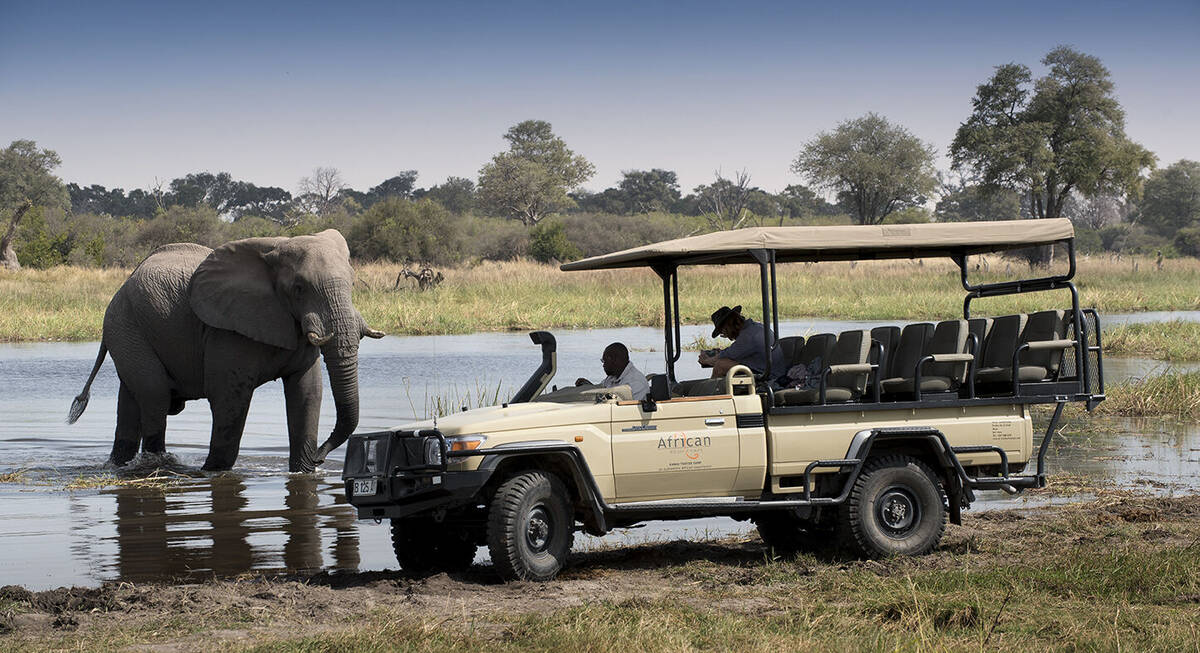
African Jacana Safari
7 days • 3 locations
MAUN AIRPORT TO MAUN AIRPORT
An adventurous introduction to Botswana blending prolific wildlife, incredible landscapes and varied activities staying at relaxed camps in the Chobe Enclave, a community-owned reserve bordering the Moremi, and Makgadikgadi Pans.
US$8,550 - US$12,280 per person

Reedbuck Safari
8 days • 3 locations
MAUN AIRPORT TO MAUN AIRPORT
Focussing on the Okavango Delta and combining the crème de la crème of Botswana’s camps – Zarafa, Vumbura Plains and Mombo – this is one of the finest safari experiences in Africa.
US$23,410 - US$36,280 per person

Spotted-necked Otter Safari
6 days • 2 locations
MAUN AIRPORT TO MAUN AIRPORT
Discover the heart of the Okavango Delta and diverse Linyanti, staying in two classic luxury canvas camps in private reserves this is a varied, wildlife-filled safari experience.
US$9,950 - US$14,800 per person
Our top 12 lodges & safari camps in Kwando-Linyanti area
All camps listed here range from the substantial comfort of King’s Pool to the much more simple bushcamp style of Linyanti Bush Camp and spread across from north to south. Ask us for more details of what's where, and what's likely to suit you best!

Lagoon Camp
Within the vast Kwando Reserve, renowned for its wild dogs, Lagoon Camp offers excellent game viewing that focuses on predators.

Lebala Camp
With enthusiastic guides and trackers, Lebala – in a vast private reserve – is particularly well-placed for seeking wild dogs.

Selinda Camp
In an attractive area that is particularly rich in game between June and November, the luxurious Selinda Camp caters particularly well for photographers.

DumaTau
DumaTau, in the private Linyanti Reserve, offers game drives, seasonal boat cruises and walks. Wildlife safaris here are quite seasonal, and are at their best during the height of the dry season, between June and October.

Linyanti Bush Camp
An increasingly rare find in Botswana, Linyanti Bush Camp blends relative simplicity with numerous activities and very good guiding.

Selinda Explorers Camp
The luxurious, traditional tented Selinda Explorers Camp offers a mix of walking, canoeing and game drives led by really top notch guides in a game-rich area.

Savuti Camp
Set above the Savuti Channel, the refurbished seven-room Savuti Camp offers the potential for viewing large herds of elephant and significant lion encounters.

Zarafa Camp
Zarafa is an exclusive camp overlooking the scenic Zibadianja Lagoon within the Selinda Reserve, a particularly game-rich area between June and early November.

Kings Pool
King’s Pool is a top-end luxury safari camp with a price tag to match; the game viewing can be very good during the dry season.

Linyanti Ebony
Independently owned and run, the small Linyanti Ebony sits on the same site as Linyanti Bush Camp, with similarly high standards of guiding, and a strong emphasis on the wildlife experience.

Linyanti Expeditions
Tip-top guiding. In tune with the habitat. Down-to-earth, authentic camp comfort. A place of wilderness safari harmony.

Little DumaTau
Small and sophisticated, Little DumaTau lies adjacent to its larger sibling in the private Linyanti Reserve, overlooking a beautiful lagoon.
Excursions in Kwando-Linyanti area
Optional, extra day-trips and excursions that are possible while you’re staying in Kwando-Linyanti area. Talk to us: these excursions are usually best arranged before you go.

Helicopter Flight - Botswana
Various: from 30 minutes to half a day.
Low-flying, agile and offering superb views, helicopters are an ideal way to move around the Okavango Delta.You can use them instead of fixed-wing inter-lodge transfers or as an addition to other wildlife watching activities, and of course, helicopters can hover to allow that perfect pic, whereas fixed-wings can’t.
More about Helicopter Flight
Looking for inspiration on where to travel next?
Visit our trip chooser to explore your options and find inspiration for your perfect African adventure
Inspire meFrequently Asked Questions
Kwando-Linyanti FAQs
Wondering how to get to Kwando-Linyanti or how it compares with Botswana’s big-name parks and reserves? Looking for the best time to visit or tracking down the perfect safari camp for a private gathering? We know the answer.
Check out our frequently asked questions below and drop us a line if you want to know anything else about the Kwando-Linyanti area.
How do you get to Kwando-Linyanti?
From Maun to Kwando-Linyanti:
- By air: The fastest and most convenient way to reach the Kwando-Linyanti area from Maun is by light aircraft. Charter flights are the standard option, with a flight time of approximately 60 to 90 minutes, depending on your specific destination within the private concessions. Flights land at airstrips near key lodges like Lagoon, Lebala, and Selinda, and onward transfers to camps are arranged by the lodges.
- By road: For adventurous travellers on a mobile safari, a scenic 4x4 route is possible but challenging due to the region’s remoteness. This journey typically spans several days and includes detours to explore wildlife hotspots along the way.
- By air: Most travellers fly directly from their Delta safari camp to Kwando-Linyanti airstrips. Charter flights provide a seamless connection between the two pristine wilderness areas. Depending on your starting location in the Delta, flight times range from 60 to 90 minutes. Transfers to your chosen lodge are included, ensuring a smooth journey.
- By air: Light aircraft flights connect Kasane to airstrips in the Kwando-Linyanti reserves, with flight durations of 30–60 minutes. These transfers allow visitors to transition effortlessly from Chobe to the private concessions for a more exclusive safari experience.
How do you get around Kwando-Linyanti?
- Guided game drives: Most visitors explore Kwando-Linyanti on game drives from their safari lodge or camp. Conducted in open-sided 4WD vehicles and led by expert guides, these drives offer unparalleled wildlife viewing opportunities. Expect morning and afternoon game drives, with the chance to track predators like lions and wild dogs or witness herds of elephants along the rivers.
- Boat safaris: The Kwando and Linyanti rivers provide opportunities for serene water-based exploration. Boat safaris allow you to spot hippos, crocodiles, and aquatic birds, while giving a different perspective on the landscape. Sundowner cruises are particularly popular, combining breathtaking views with relaxed wildlife sightings.
- Walking safaris: Some lodges offer guided walking safaris, where you can explore the bush on foot, learning about the area's smaller wildlife, plants, and tracking techniques. Walking with San Bushmen adds a cultural layer to this immersive experience.
Exclusive-use camps for families and private groups
- Zarafa Dhow Suite
Located in the Selinda Reserve, the Zarafa Dhow Suite offers unparalleled luxury with its two-bedroom, private villa. Completely independent from the main Zarafa Camp, the suite includes a dedicated team—your own manager, guide, chef, and staff. Its distinctive early-explorer decor features Zanzibari doors, Chesterfield sofas, and brass-trimmed furniture. Guests can enjoy exclusive access to their private plunge pool and tiered deck overlooking the floodplains, with frequent sightings of hippos and elephants. Read our detailed review of Zarafa Camp… - Selinda Suite
Situated at Selinda Camp, this two-bedroom suite combines refined luxury with practicality. Guests have access to a private guide, vehicle, chef, and manager. Activities include bespoke game drives and guided walks. The suite’s spacious interiors feature intricate Zanzibari doors, copper bathtubs, and solar-powered comforts, making it a superb choice for an intimate family retreat. Read our detailed review of Selinda Camp… - Linyanti Ebony
Designed for families or small groups, Linyanti Ebony features just four tents, including a family tent that sleeps five. Child-specialist guides are available, and activities include game drives, mokoro excursions, and seasonal boating. This camp is perfect for those seeking a more relaxed and personal connection with the Linyanti Marshes. Read our detailed review of Linyanti Ebony… - Linyanti Expeditions
Aimed at adventurous travellers, Linyanti Expeditions offers an authentic bush experience with six classic safari tents. Each tent features a "star suite," allowing guests to sleep under the Milky Way. Activities focus on walking safaris, birdwatching, and mokoro trips, making it ideal for those who want to immerse themselves in Botswana's wilderness. Read our detailed review of Linyanti Expeditions… - Little DumaTau
This smaller, more intimate camp is perfect for private groups or families. With only four suites, it offers the same stunning views and luxurious amenities as DumaTau but ensures an even more personalised experience. Activities are tailored to guests’ interests, with exclusive access to the diverse habitats of the Linyanti Concession, home to predators, plains game, and rare birds. Read our detailed review of Little Duma Tau…
How does Kwando-Linyanti compare to Chobe or Moremi?
Exclusivity and privacy
Unlike the public areas of Chobe or Moremi, the Kwando-Linyanti region consists of private concessions that strictly limit visitor numbers. This means no crowded sightings, limited vehicles, and a safari experience that feels unhurried and like it belongs to you alone.
Activities such as off-road driving, night safaris, and walking safaris are also permitted here, offering an adventurous connection to the wilderness that is unavailable in the regulated public areas of Chobe or Moremi. So if you seek solitude and highly personalised experiences, Kwando-Linyanti is likely to be better suited to your needs.
Unique wildlife encounters
While Chobe and Moremi are celebrated for their diverse wildlife, Kwando-Linyanti offers its own unique advantages, particularly in predator sightings. The region is a stronghold for the highly endangered African wild dog, often seen hunting in packs, and it boasts exceptional sightings of lions, leopards, and cheetahs. Herds of elephants and buffalo migrate to the rivers and floodplains during the dry season, creating dramatic wildlife spectacles. Rare antelope like sable and roan are frequently seen here, adding to the area's appeal for seasoned safari-goers.
In comparison:
- Chobe is known for its enormous elephant herds, particularly along the Chobe Riverfront, but it can feel busier and less intimate due to the volume of visitors.
- Moremi offers fantastic predator-prey interactions but lacks the flexibility for night drives or off-road exploration, making the wildlife experience more structured.
One of the biggest advantages of Kwando-Linyanti is the range of activities available. While Chobe and Moremi primarily focus on daytime game drives, Kwando-Linyanti offers day and night drives, walking safaris, and in some areas, boat safaris along the rivers or Selinda Spillway. Night drives, in particular, reveal a world of nocturnal species, such as civets, genets, aardwolves, and honey badgers, offering a whole new dimension to your safari.
In comparison:
- Chobe stands out for its boat safaris along the Chobe River, perfect for viewing elephants, hippos, and crocodiles up close.
- Moremi offers mokoro excursions in the Okavango Delta, a tranquil and iconic experience, though this is dependent on seasonal water levels.
Wilderness and remoteness
While Chobe and Moremi are stunning, they are more accessible and, as a result, can in places feel less wild. Chobe, in particular, is a popular stop for travellers combining a safari with Victoria Falls, making it more crowded during peak seasons.
In contrast, the Kwando-Linyanti region offers an untouched, off-the-grid wilderness. Its remote location, accessible primarily by small aircraft, and with visitors limited to camp guests only, a stay here ensures a wilderness experience far from the distraction of other visitors.
If you’re seeking a safari that feels truly wild, Kwando-Linyanti is first-class.
Luxury and comfort
Accommodations in Kwando-Linyanti’s private concessions are intimate and luxurious, blending seamlessly with the natural environment. Camps such as Lagoon, Lebala, and Selinda offer personalized service, spacious suites, and exceptional guiding. Their location within the private concessions means guests often enjoy sightings directly from camp, with wildlife passing close by.
While Chobe and Moremi offer a range of accommodations to suit various budgets, these are often larger lodges or public campsites. If you value luxury, privacy, and a deeper connection to nature, Kwando-Linyanti delivers a more tailored and exclusive experience.
Birdwatcher’s paradise
For bird enthusiasts, Kwando-Linyanti rivals both Chobe and Moremi with its exceptional diversity of birdlife. Over 450 species, including migratory birds, can be spotted here. Carmine bee-eaters, African skimmers, and the endangered wattled crane are highlights, particularly during the wet season when the landscape comes alive with colour.
While Chobe’s Chobe Riverfront is renowned for its waterbirds and Moremi boasts excellent birding in the Okavango Delta, Kwando-Linyanti offers a tranquil and private birding experience.
Why Kwando-Linyanti?
While Chobe and Moremi are excellent choices for more accessible or first-time safaris, Kwando-Linyanti’s private concessions provide an exclusive, adventurous, and intimate experience.
So, choose Kwando-Linyanti if you want:
- Uncrowded wildlife encounters.
- Thrilling night drives, walking and off-road 4WD exploration.
- Rare species like wild dogs and sable antelope.
- Luxurious camps in remote, pristine settings.
- A safari tailored to adventure and exclusivity.
What's the impact of different seasons?
While the dry season offers predictability and excellent wildlife concentrations, the green season brings life, vibrancy, and a sense of renewal to the ecosystem, making every safari unique and rewarding. In general, the key seasonal variations in the area are laid out below.
Dry season (May to October)
- Wildlife: This is generally considered to be the best time to visit for game viewing. As the dry season progresses, water sources shrink, concentrating wildlife around permanent rivers, lagoons, and waterholes. Predators such as lions, leopards, and wild dogs are easier to spot, while large herds of elephants and buffalo dominate the landscape.
- Birdlife: While resident bird species remain active, migratory birds are largely absent. This season is less about diversity and more about observing the territorial behaviours of resident birds.
- Flora: The vegetation becomes sparse as the dry season progresses, making it easier to spot animals. Grasslands dry out, and trees shed their leaves, leaving the landscape golden and open.
- Weather: Days are warm and sunny, but nights can be quite cold, especially in June and July, so pack warm clothes for mornings and evening. Temperatures rise considerably as the season approaches October.
- Experience: Clear skies and minimal rainfall ensure optimal game drives and boat safaris, making this the peak season for visitors.
- Wildlife: This is a time of abundance as the rains replenish the landscape. Many animals give birth, resulting in plentiful sightings of young animals and predator-prey interactions. However, the dispersed water sources can make spotting certain species more challenging.
- Birdlife: This season is a birdwatcher’s paradise. Migratory birds, such as carmine bee-eaters and various waders, return, adding vibrant colours and variety to the avian population. The breeding plumage of many species is particularly striking.
- Flora: The rains transform the landscape into a lush, green paradise. Wildflowers bloom, and trees regain their foliage, creating a picturesque environment. This greenery, while beautiful, can make animals harder to spot.
- Weather: Temperatures are warm to hot, and occasional afternoon thunderstorms are common. While rain is typically brief, it can sometimes impact travel plans or create muddy conditions. Fly-in safaris are generally necessary.
- Experience: The green season is ideal for photography due to the dramatic skies, vibrant colours, and active wildlife. It also offers a more private safari experience with fewer visitors.
For those prioritising ‘big game’ viewing, the dry season (especially from June to October) is ideal.
For bird enthusiasts and lovers of lush landscapes, the green season offers unparalleled opportunities.
Travellers seeking optimum photography conditions may find the green season’s vibrant scenery and dramatic lighting more rewarding.
Visitors looking for a quieter experience should consider the shoulder months (April to early June or late October to November), which combine elements of both seasons.
